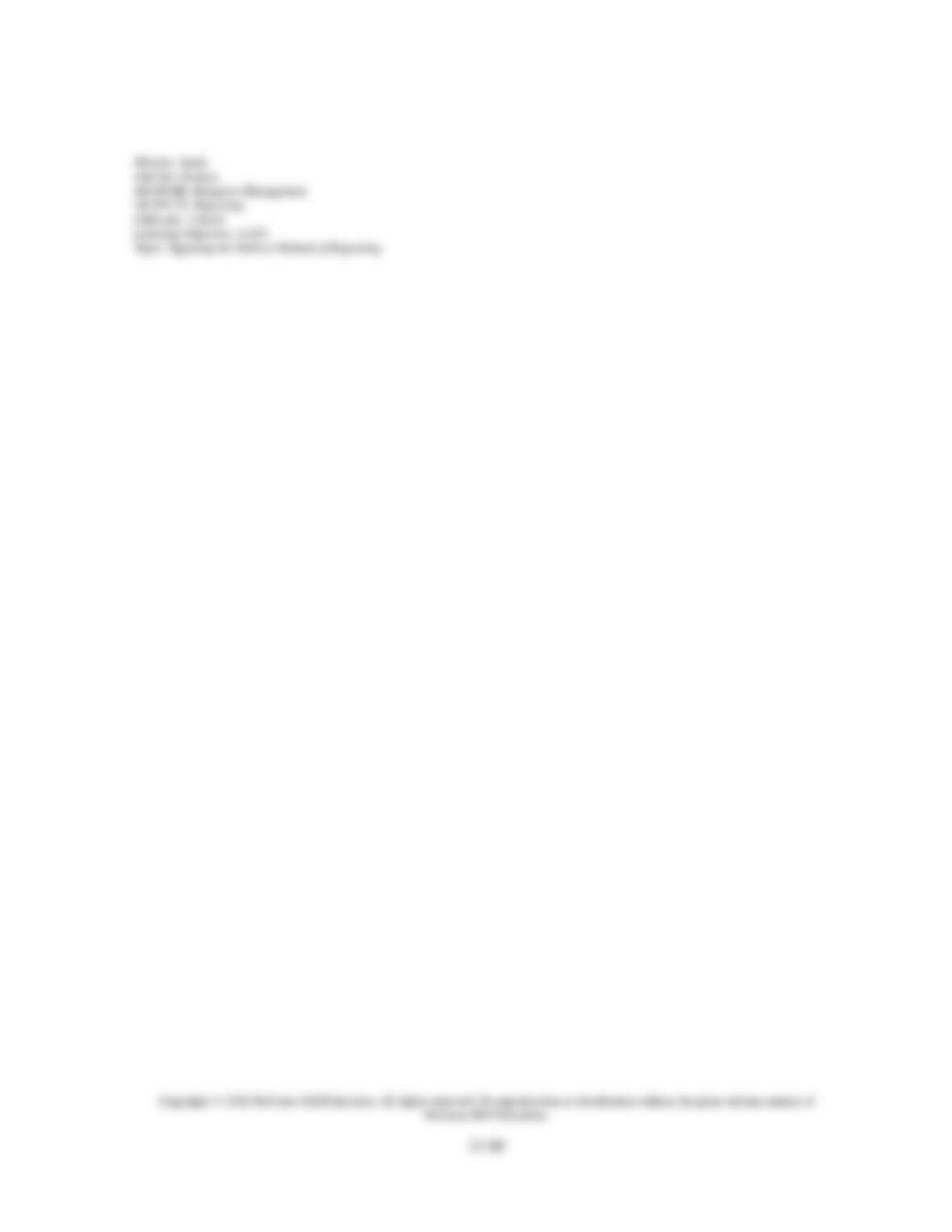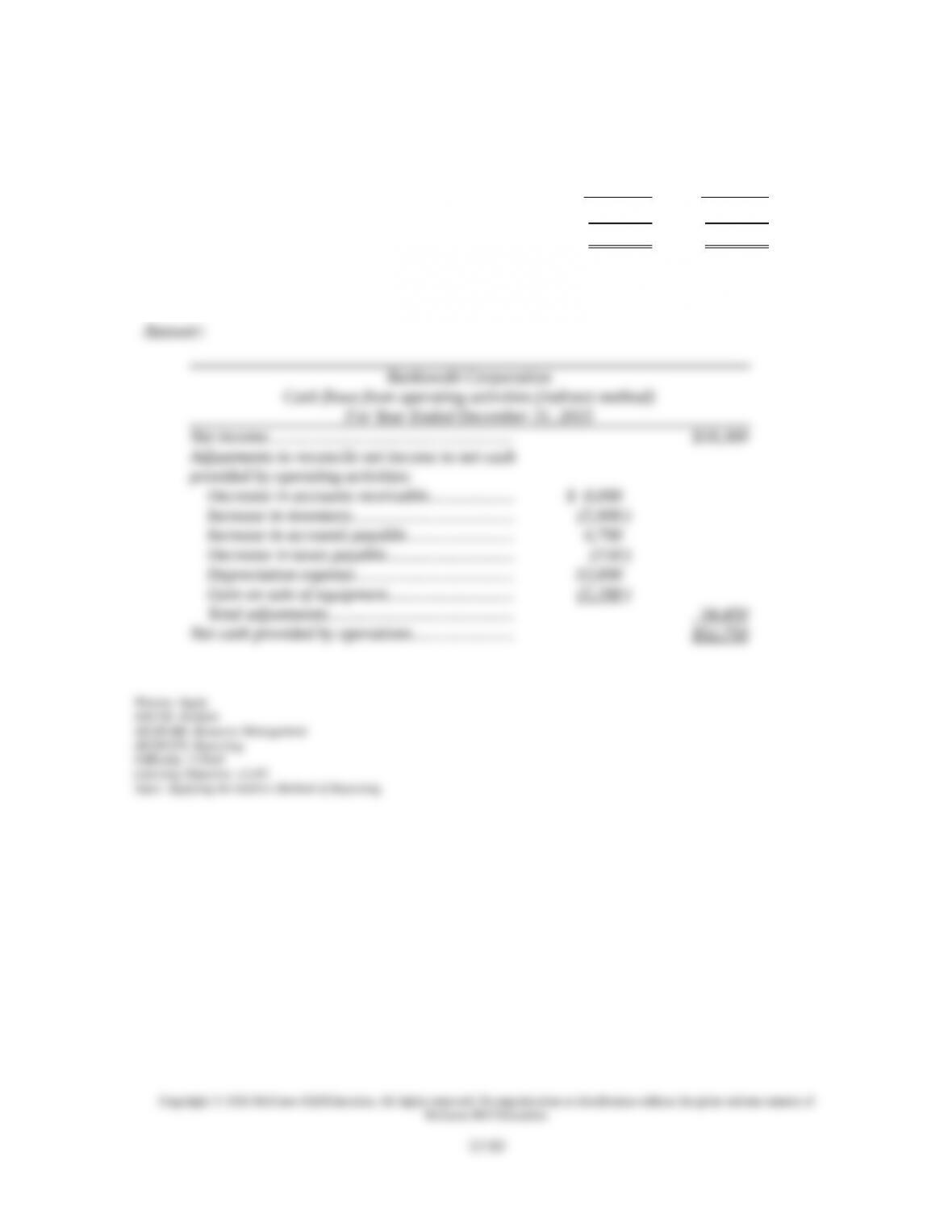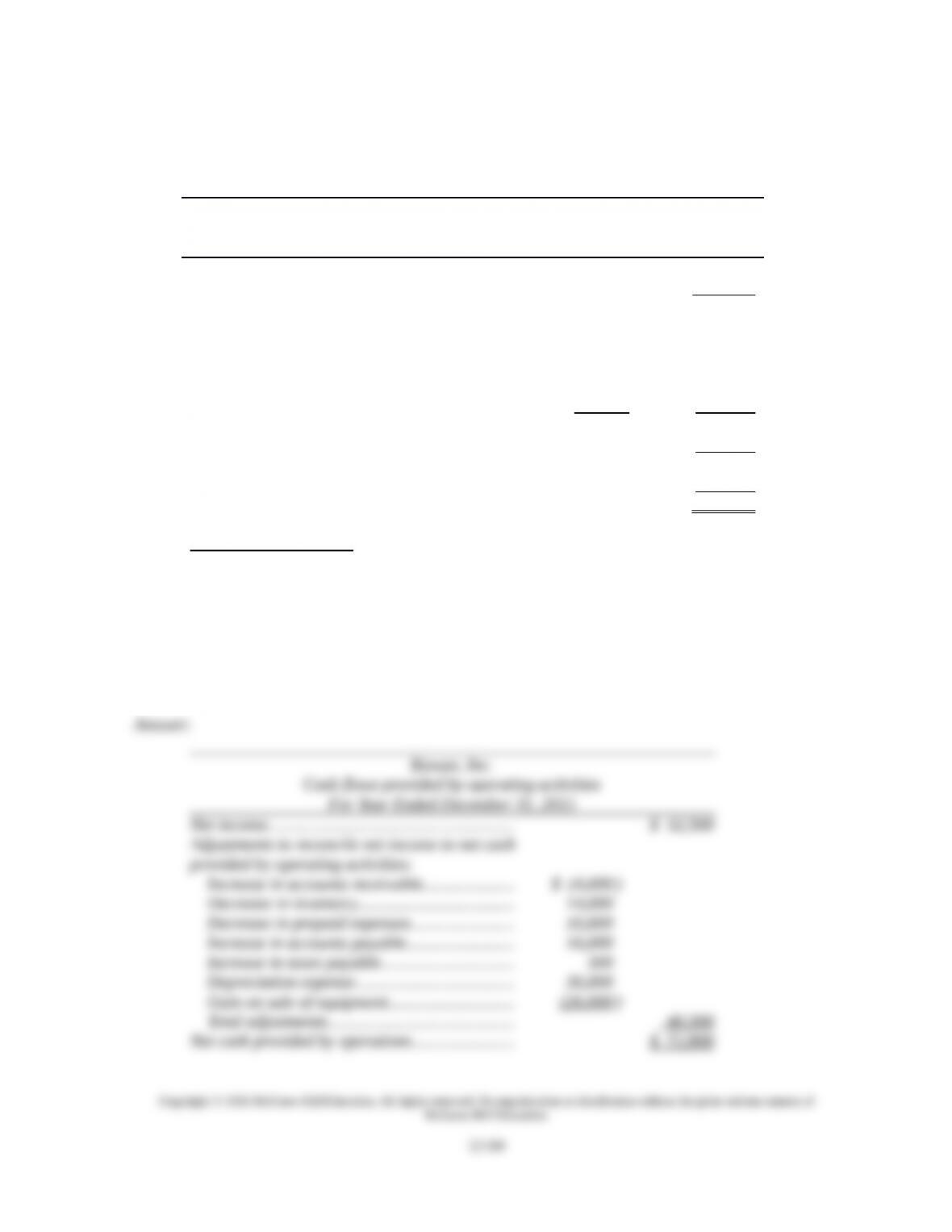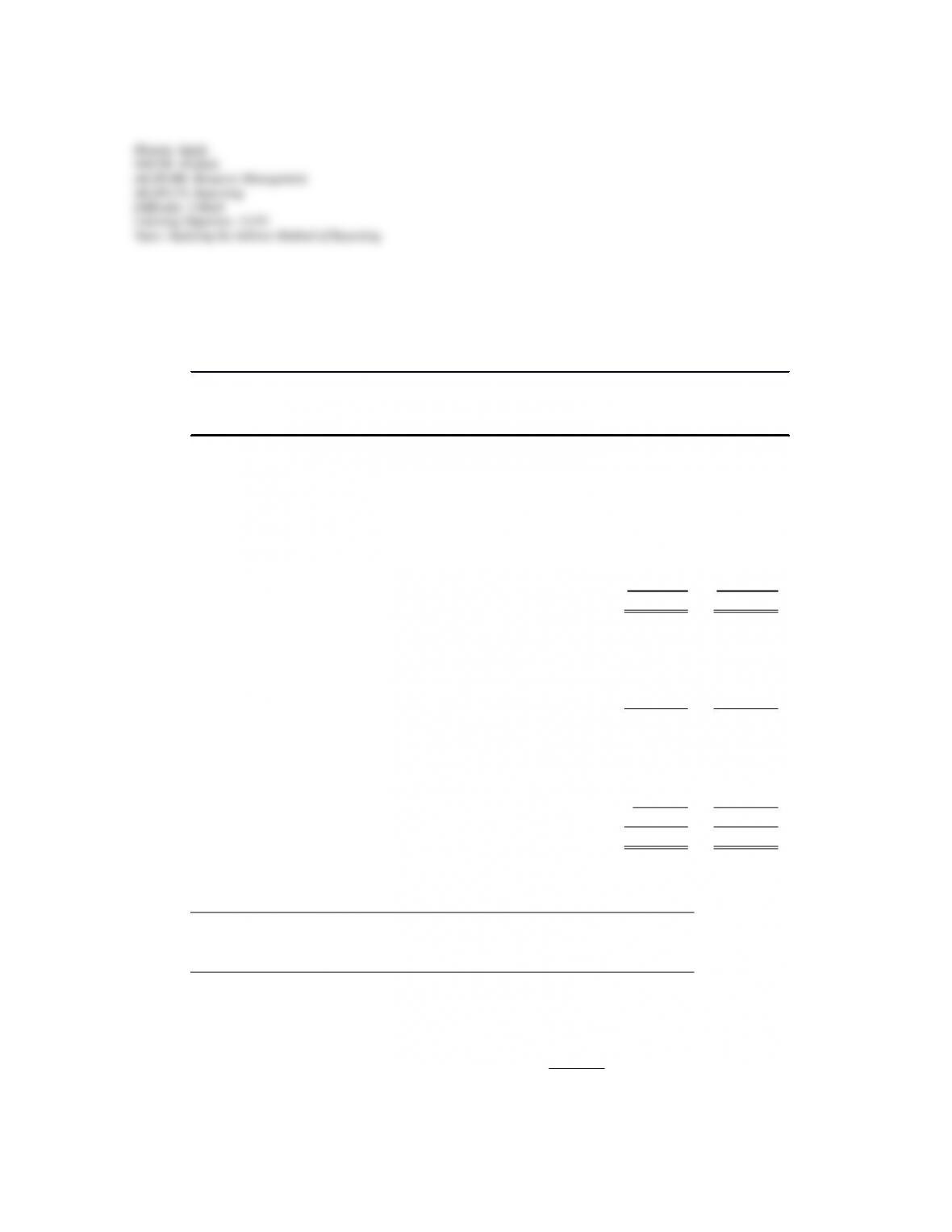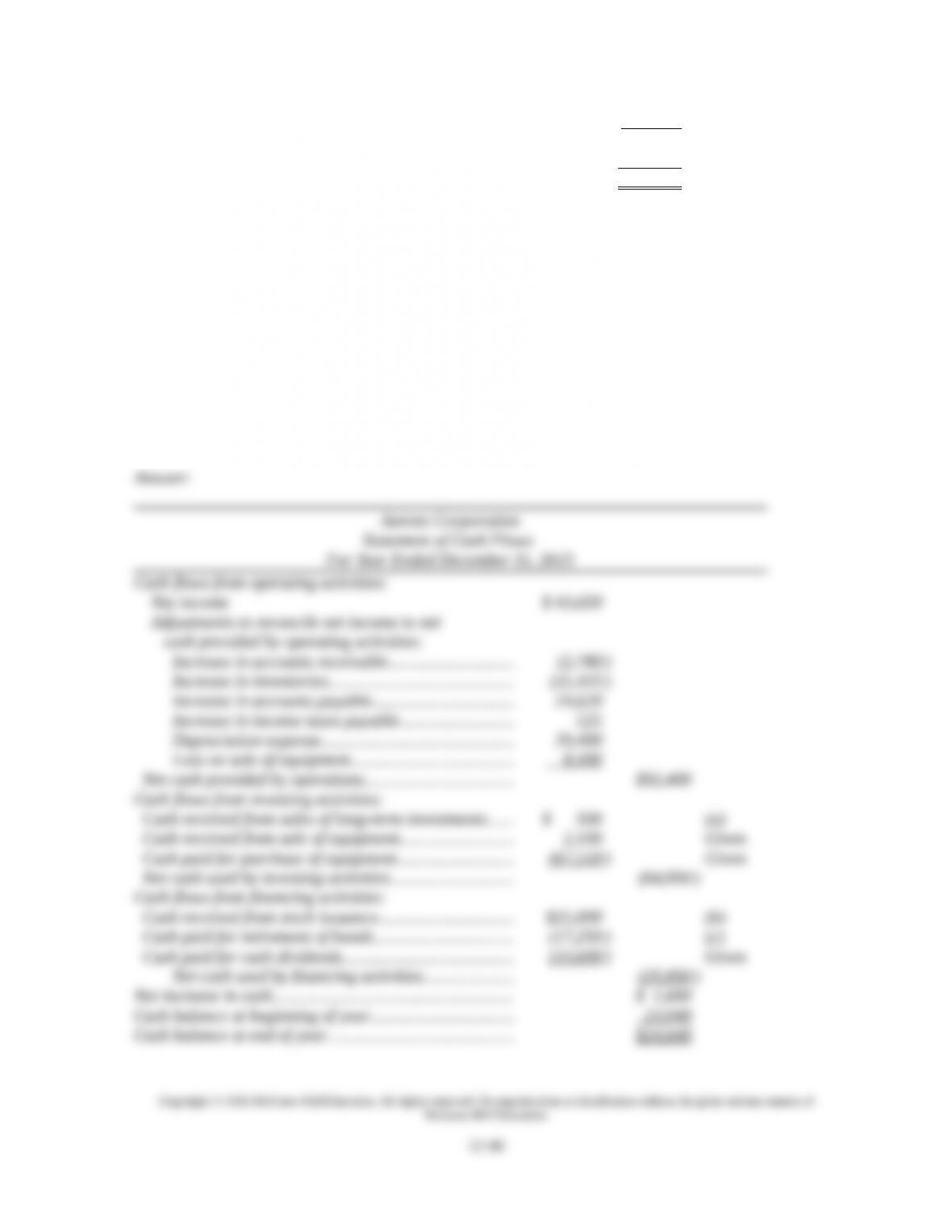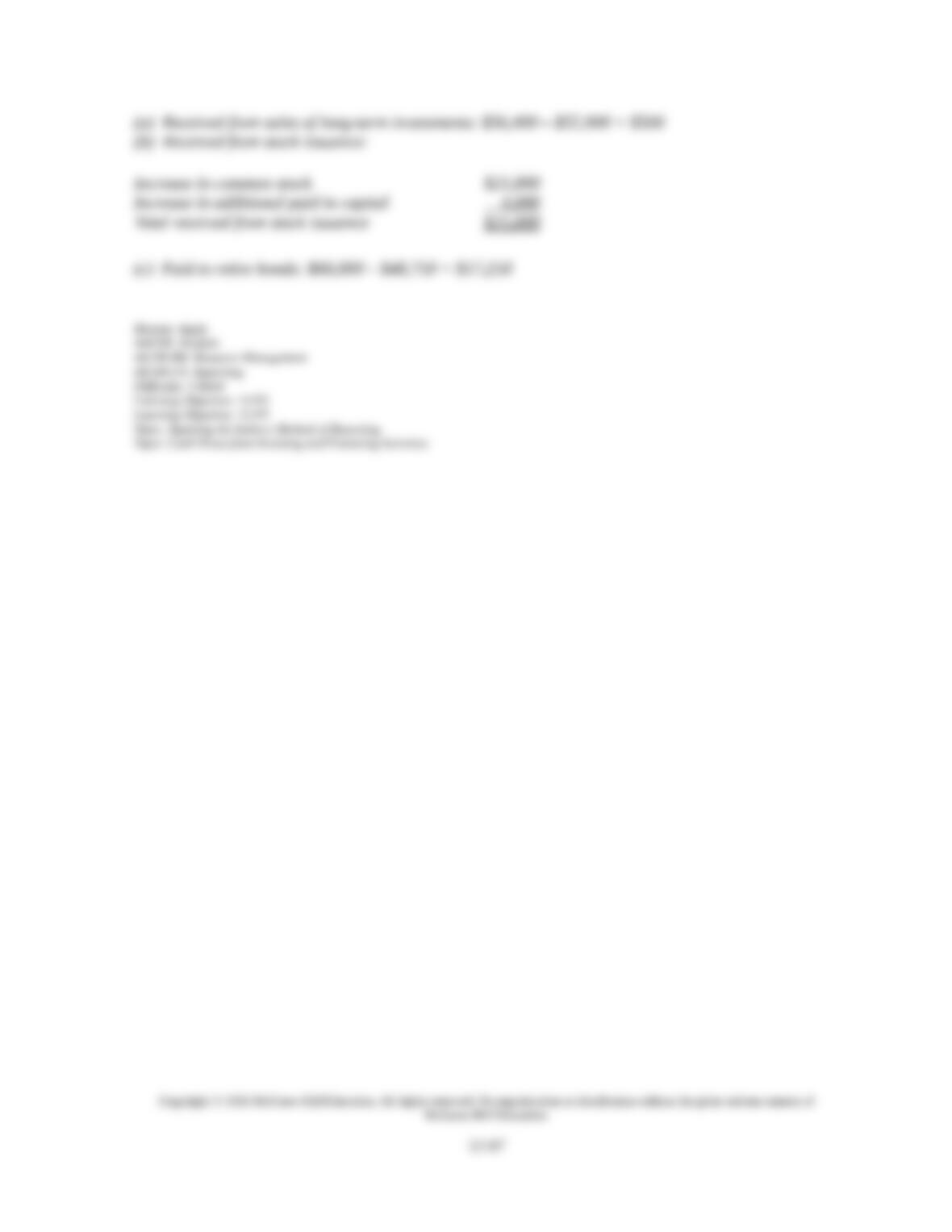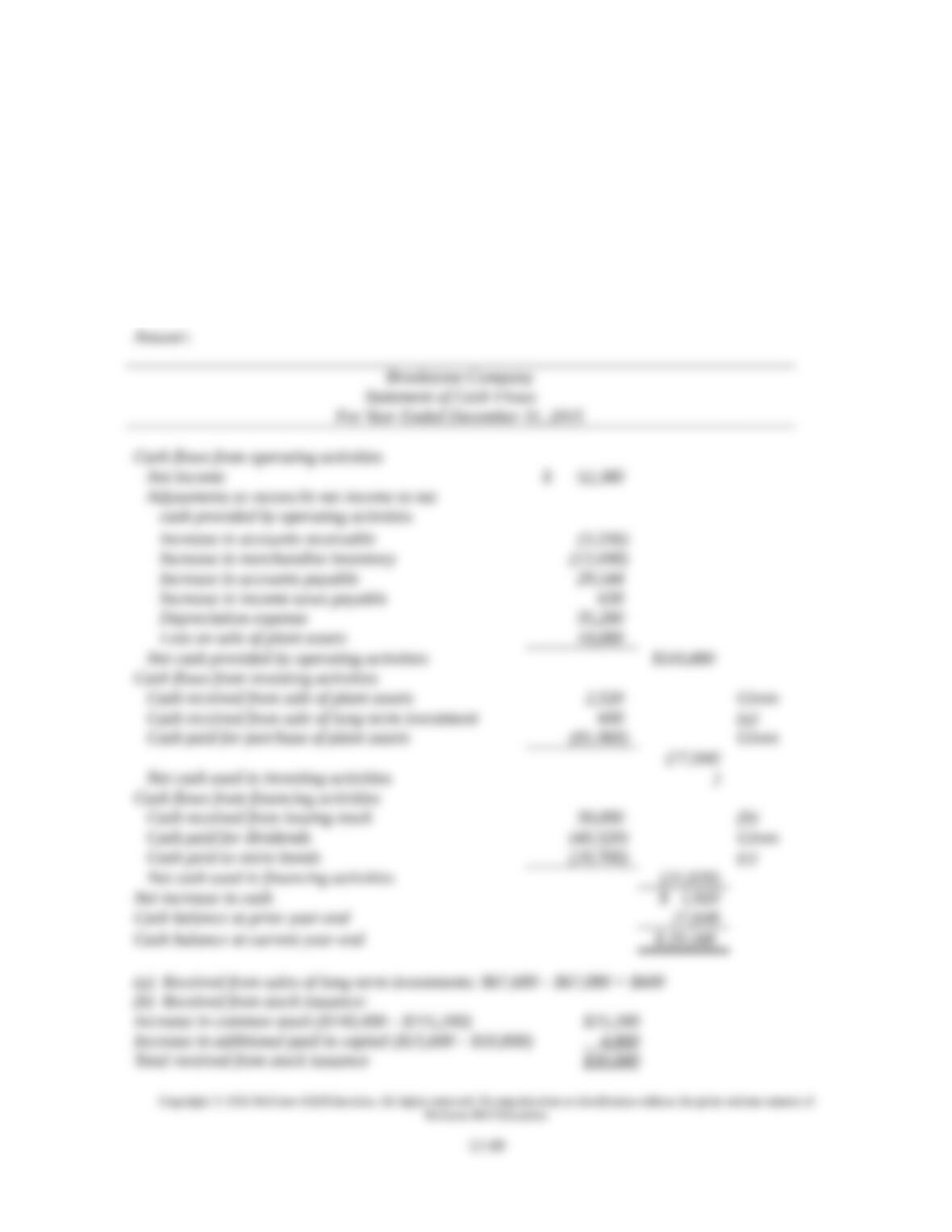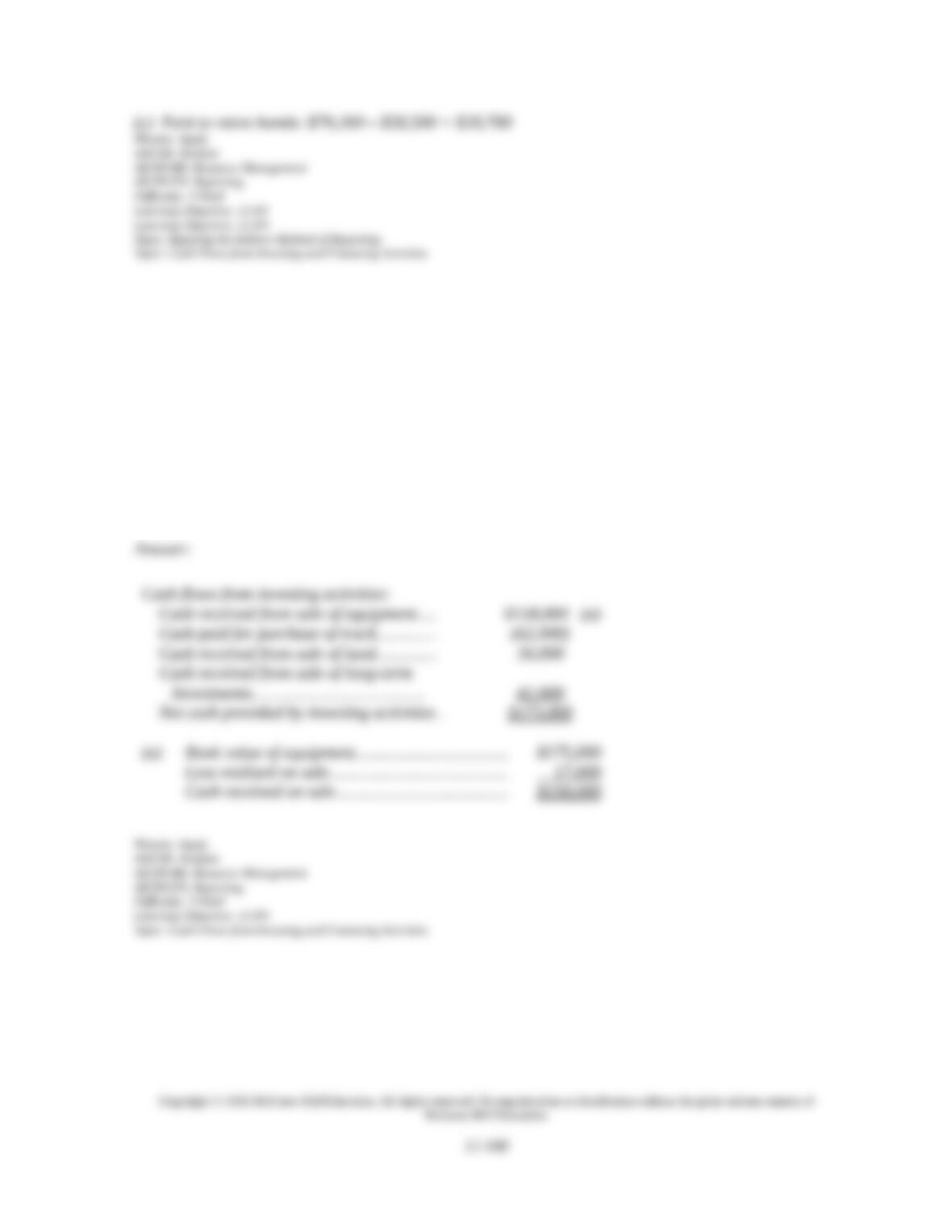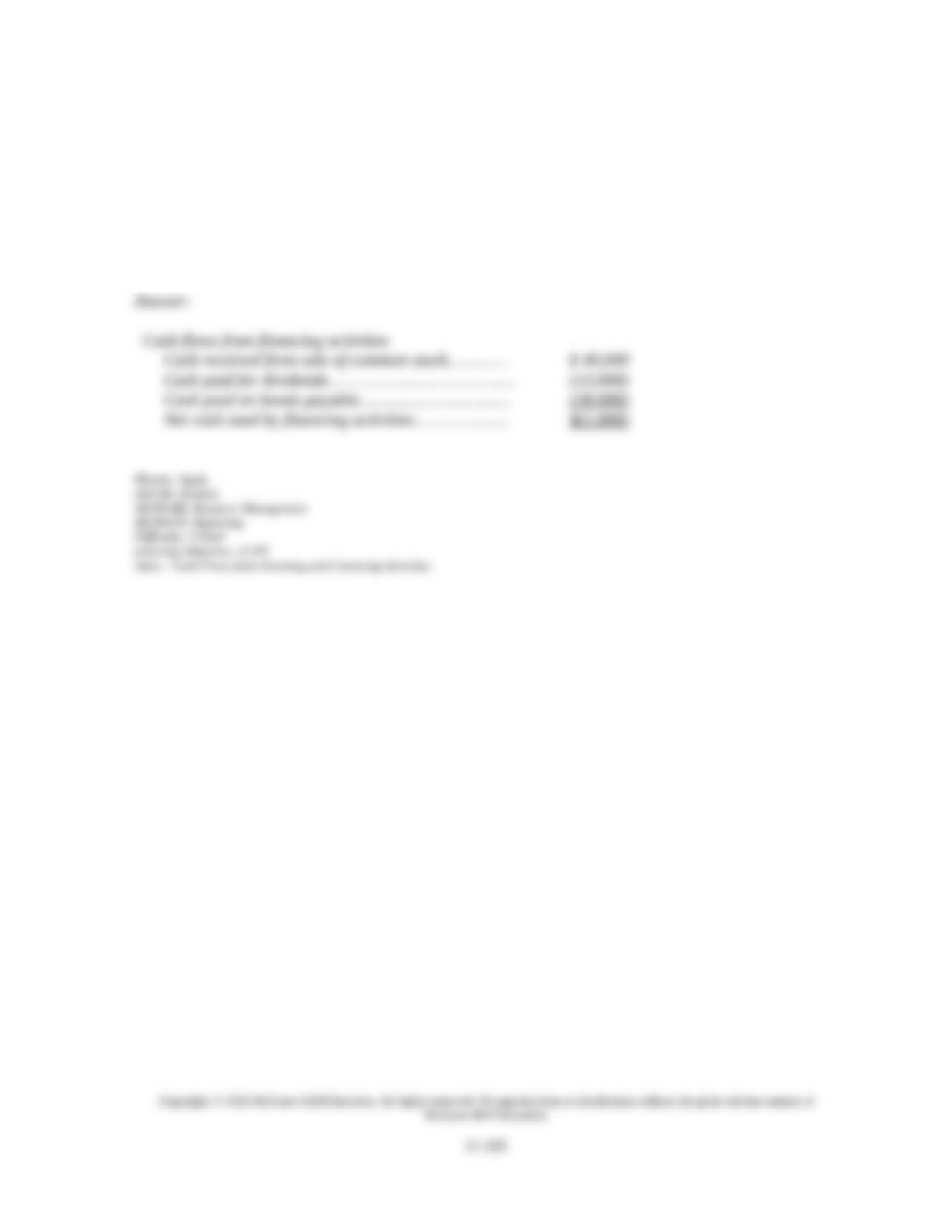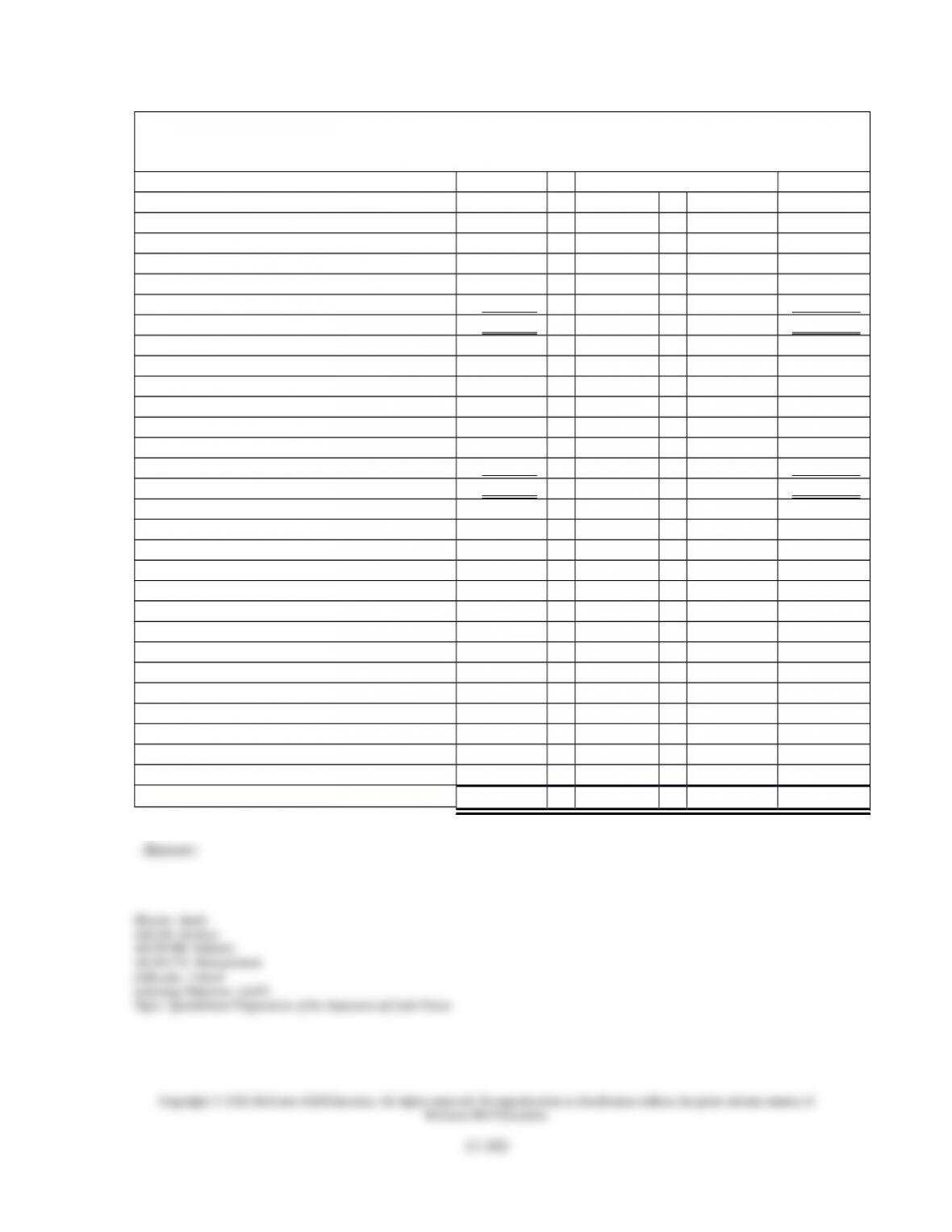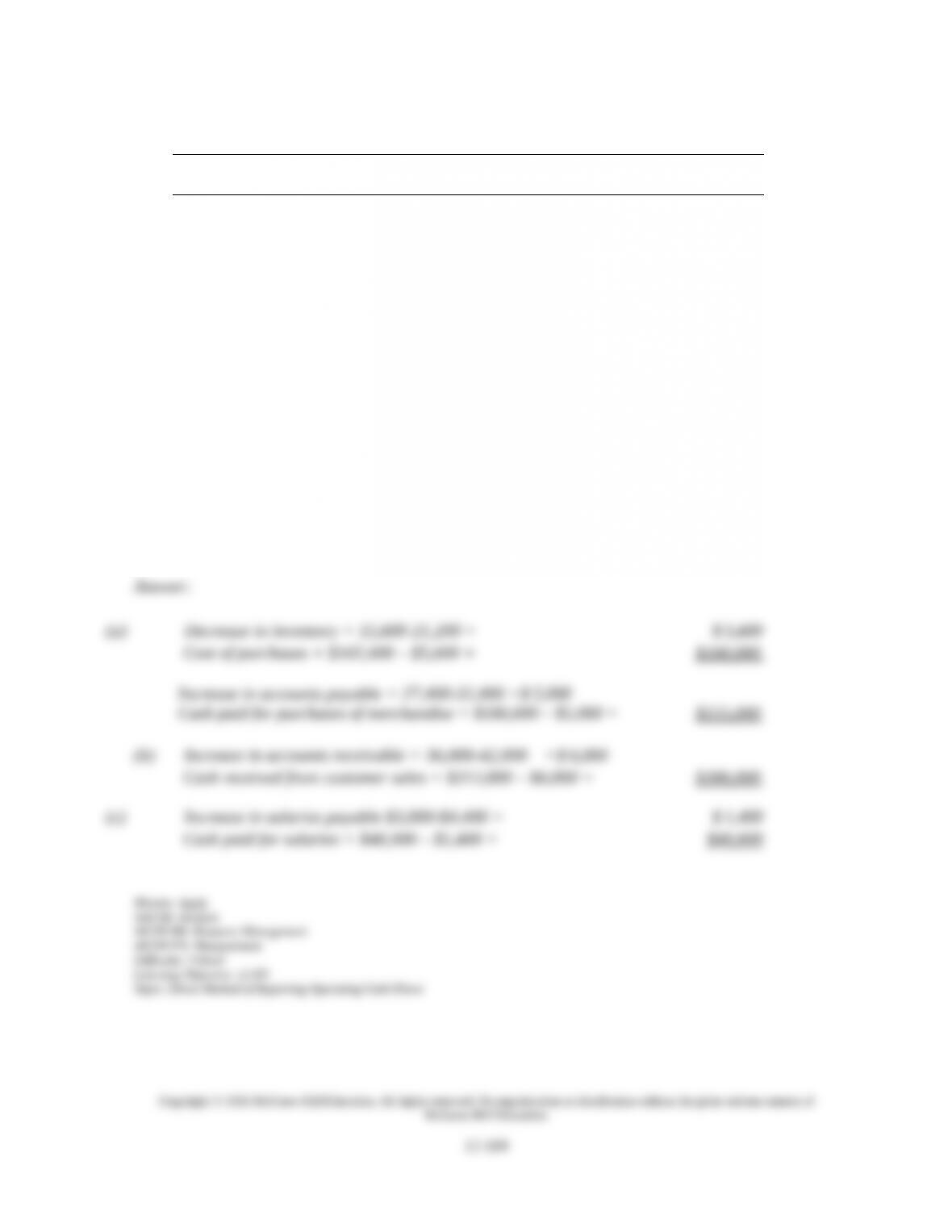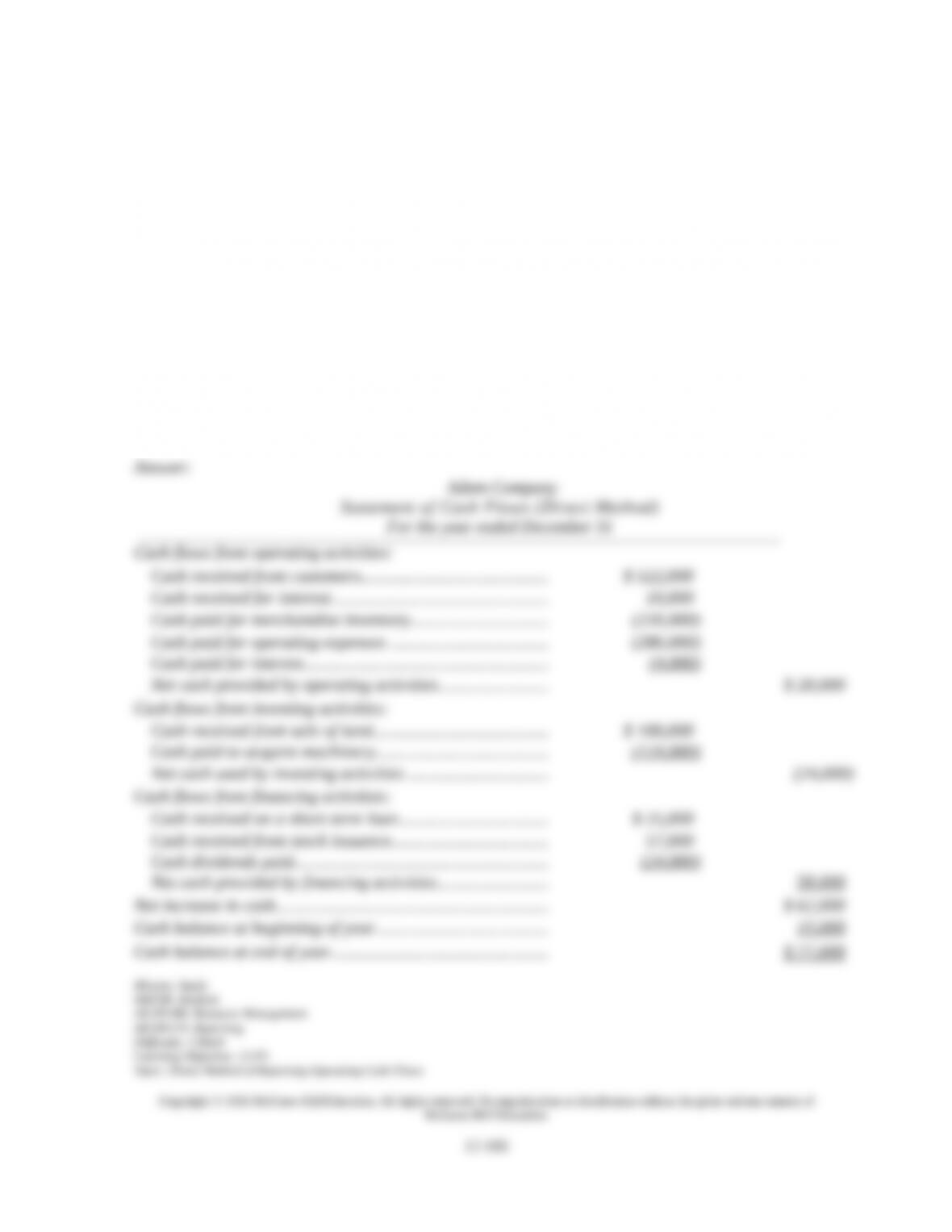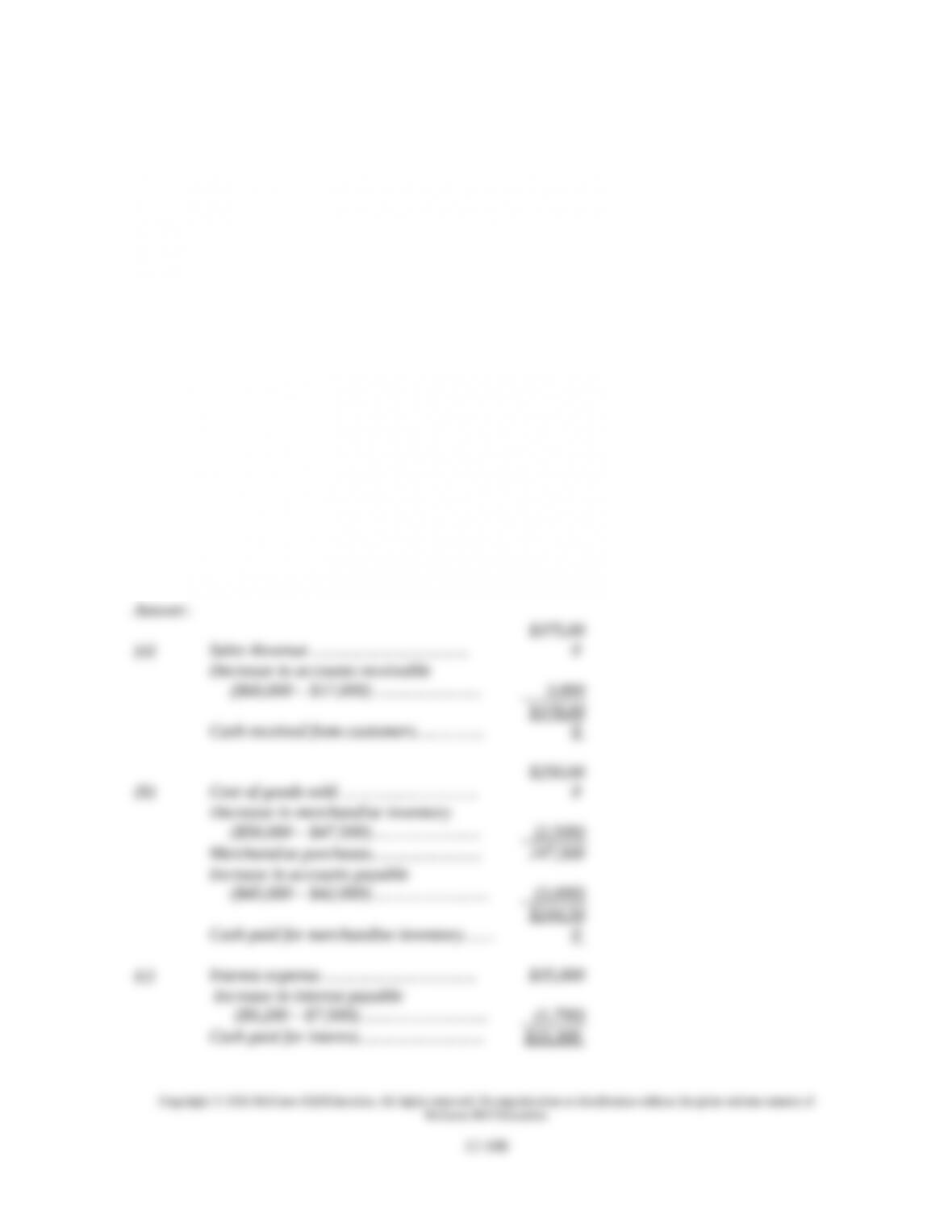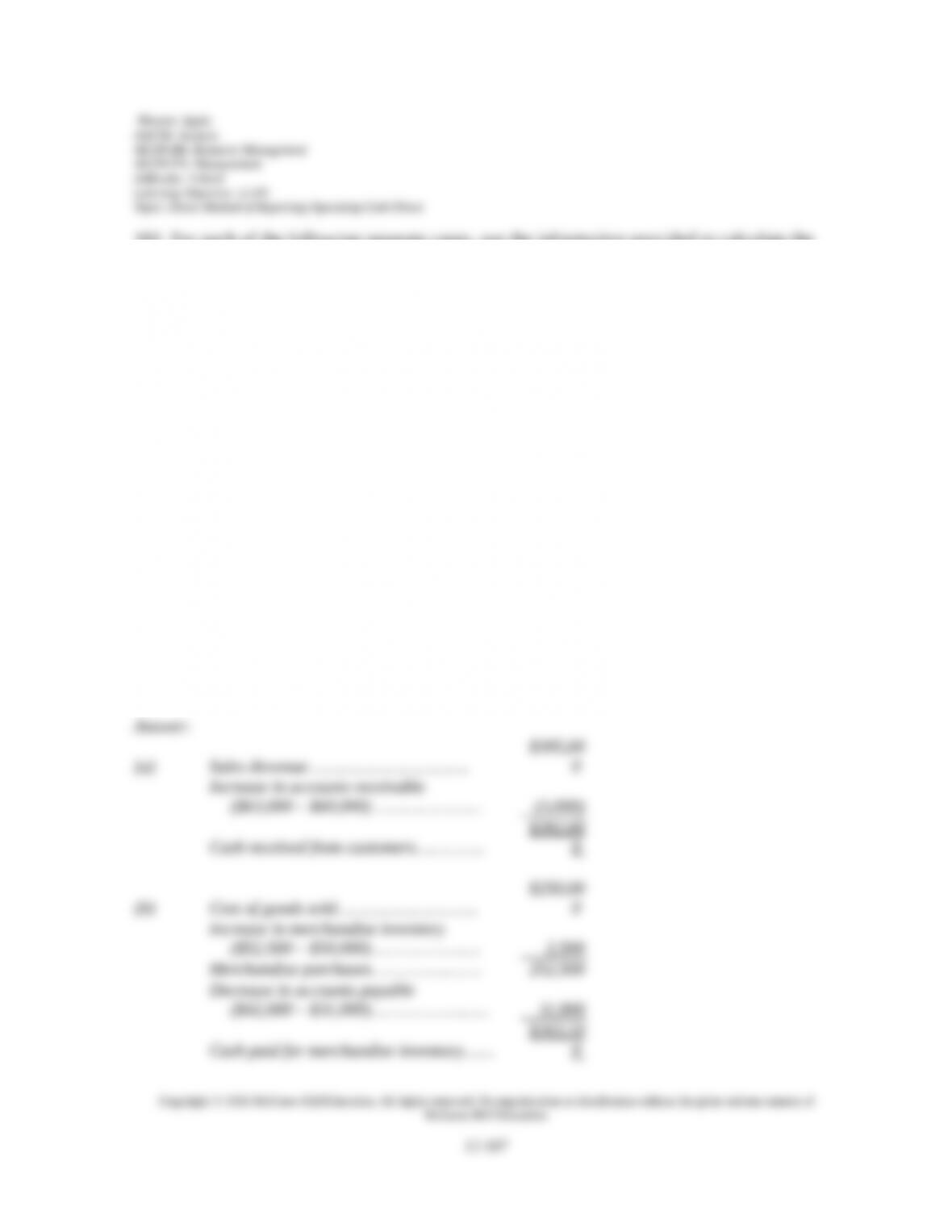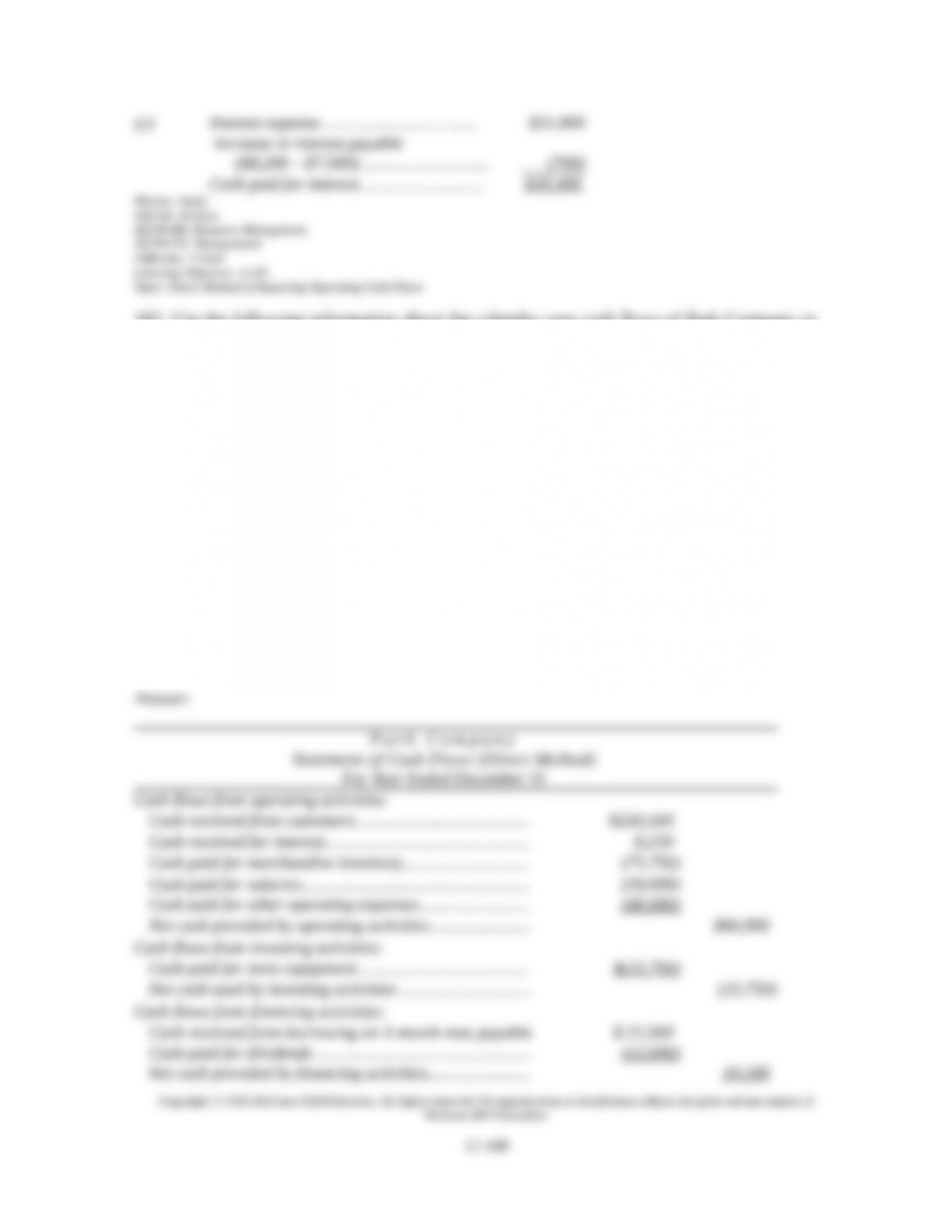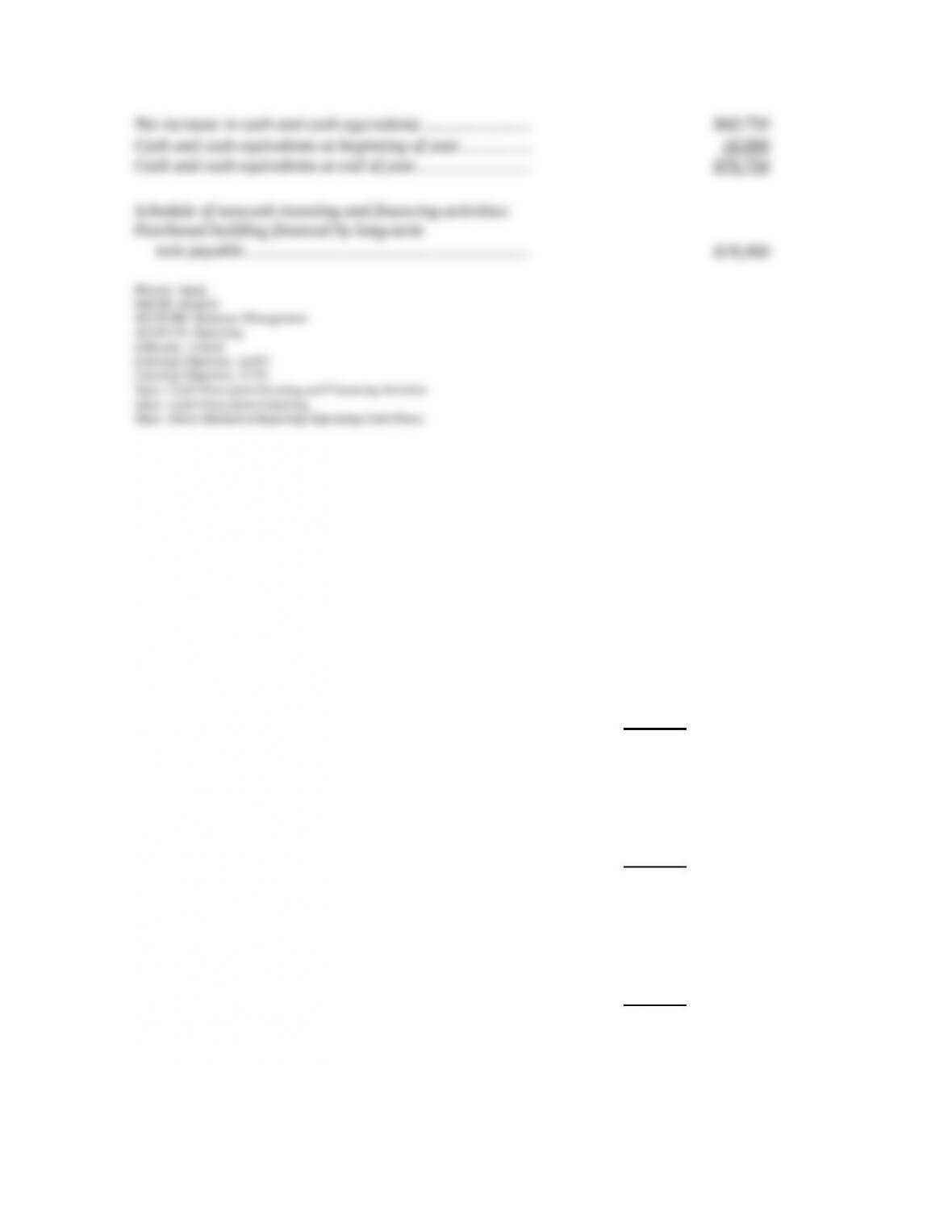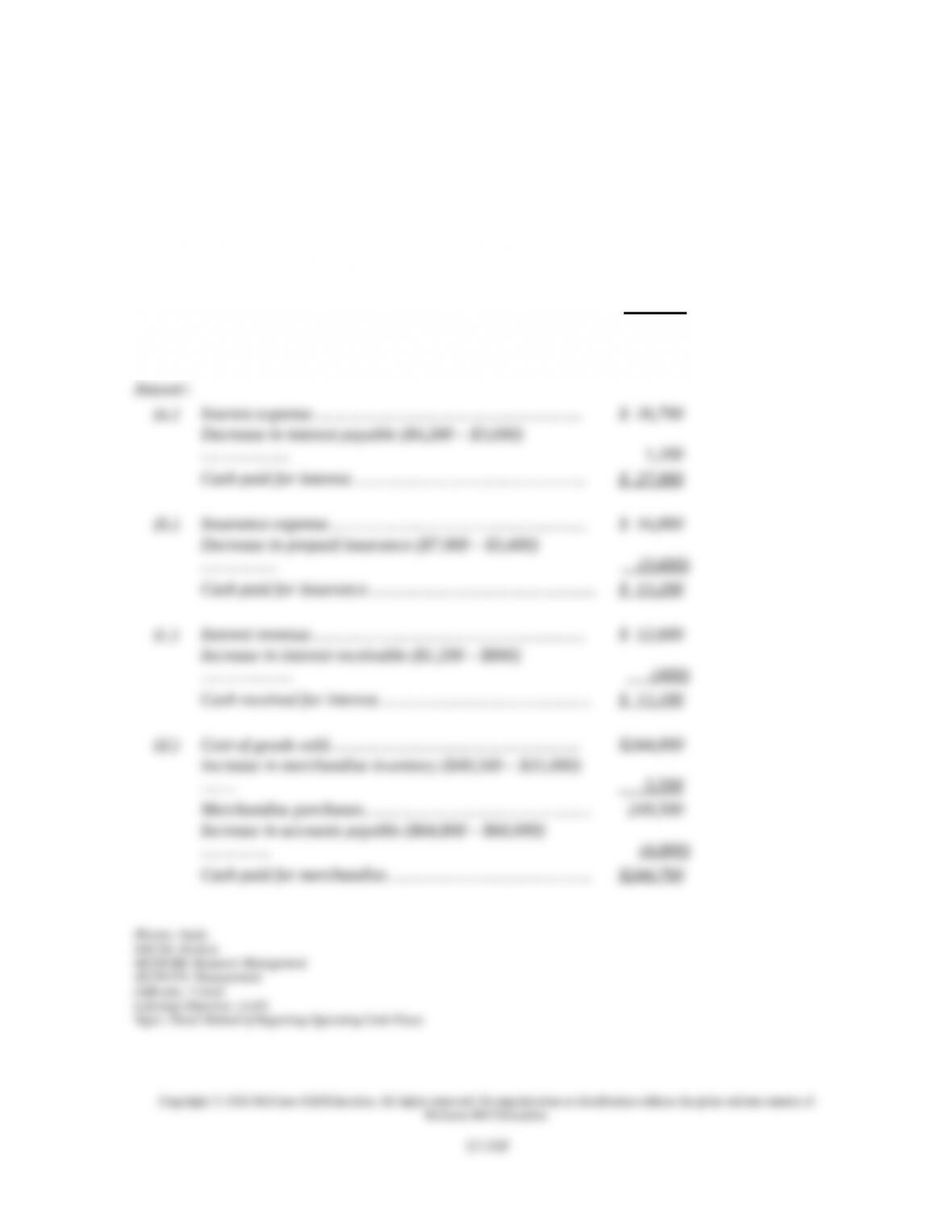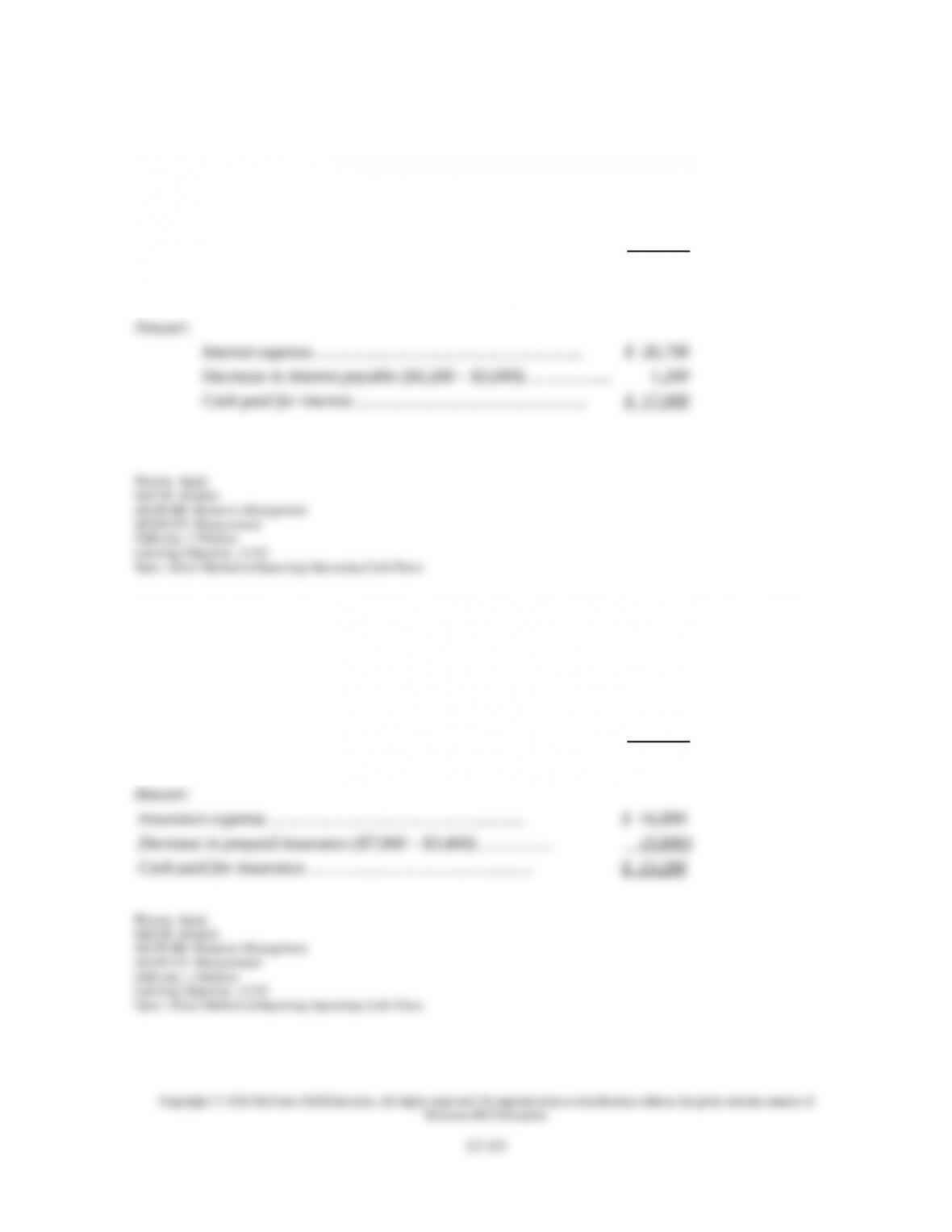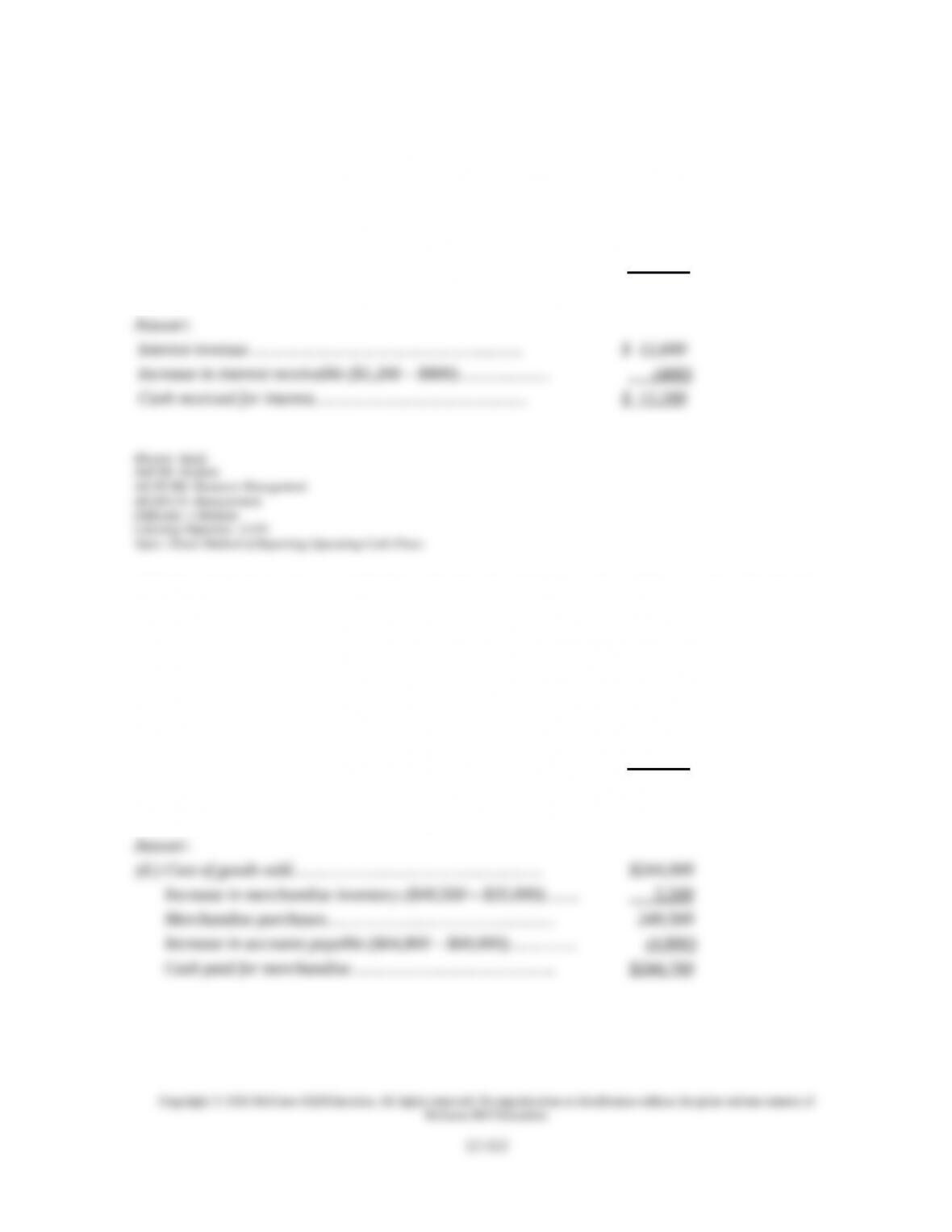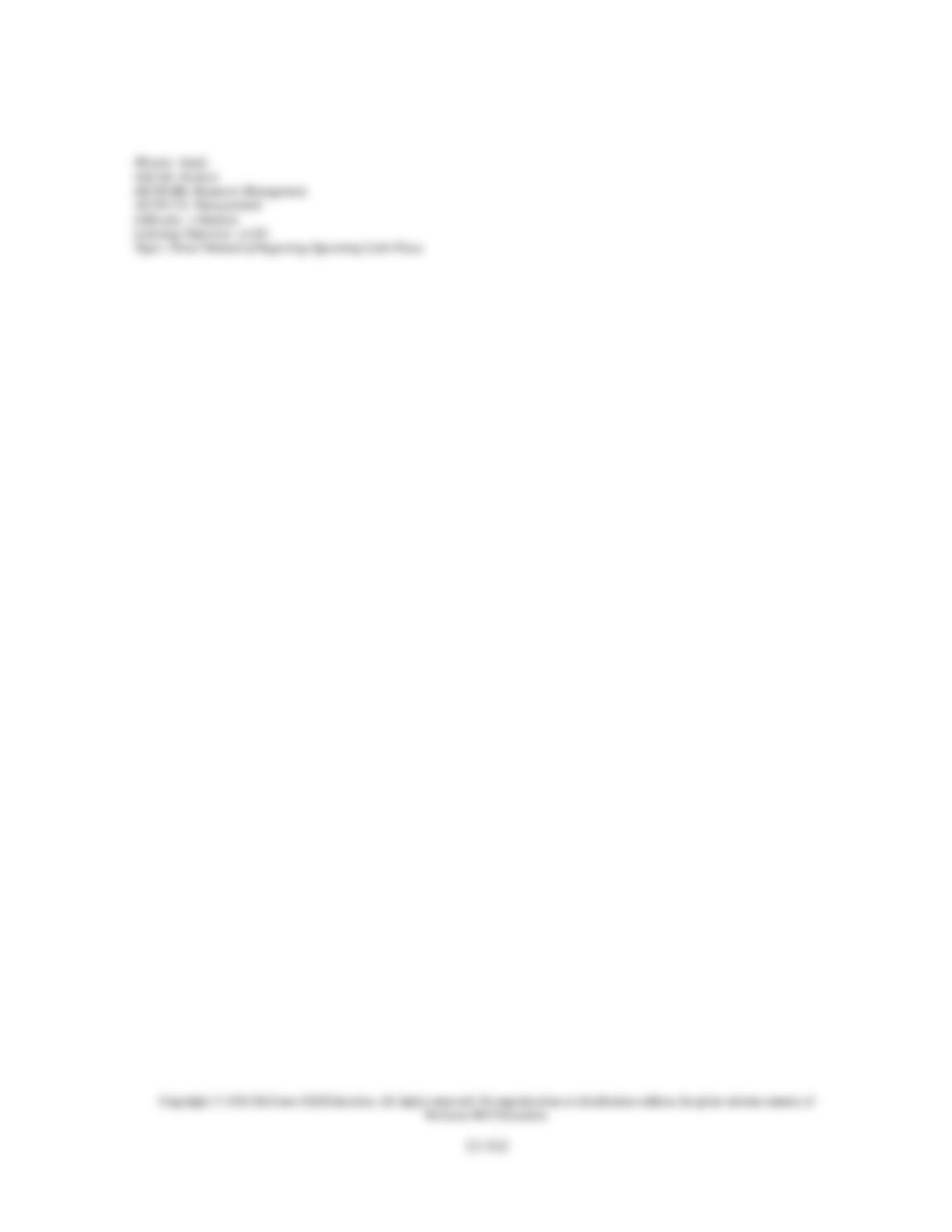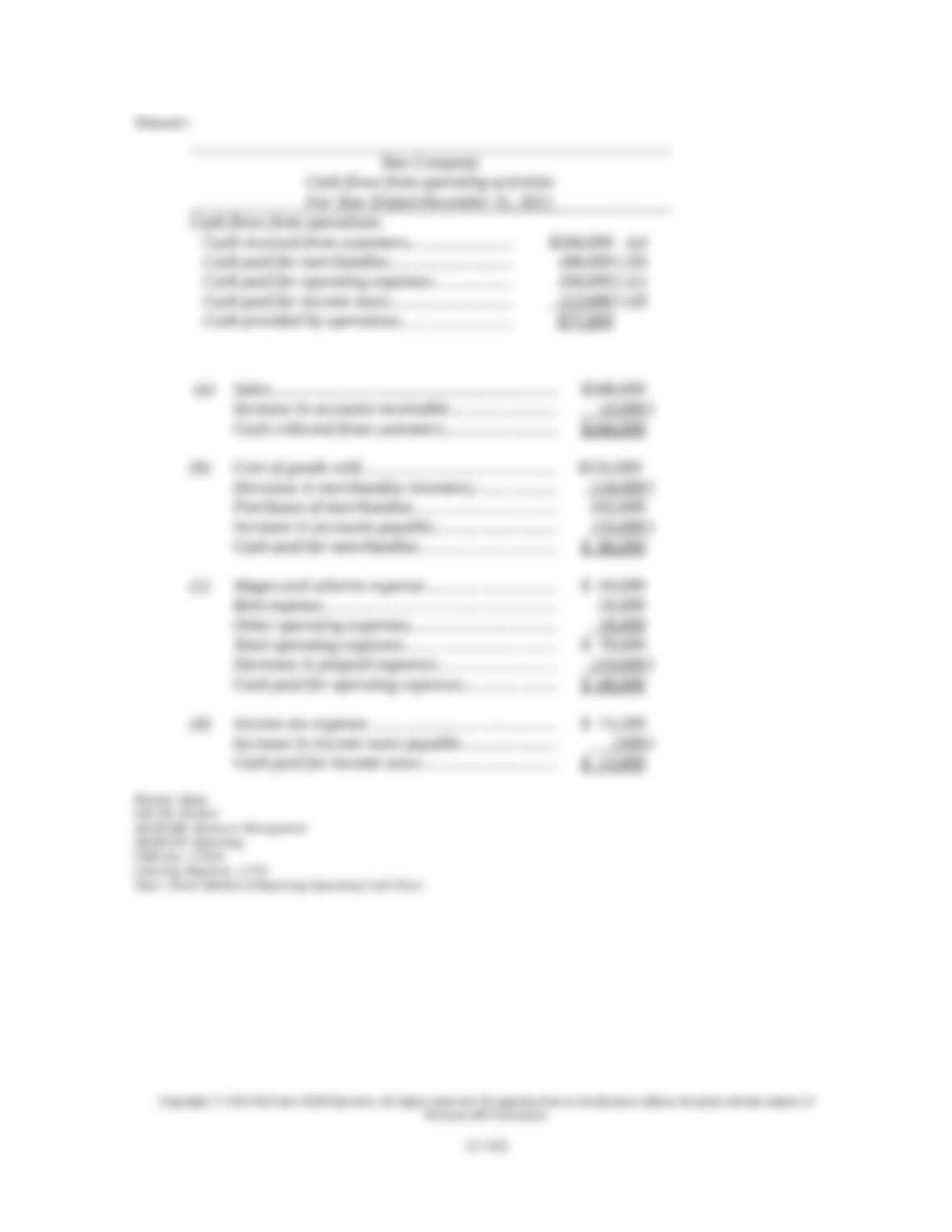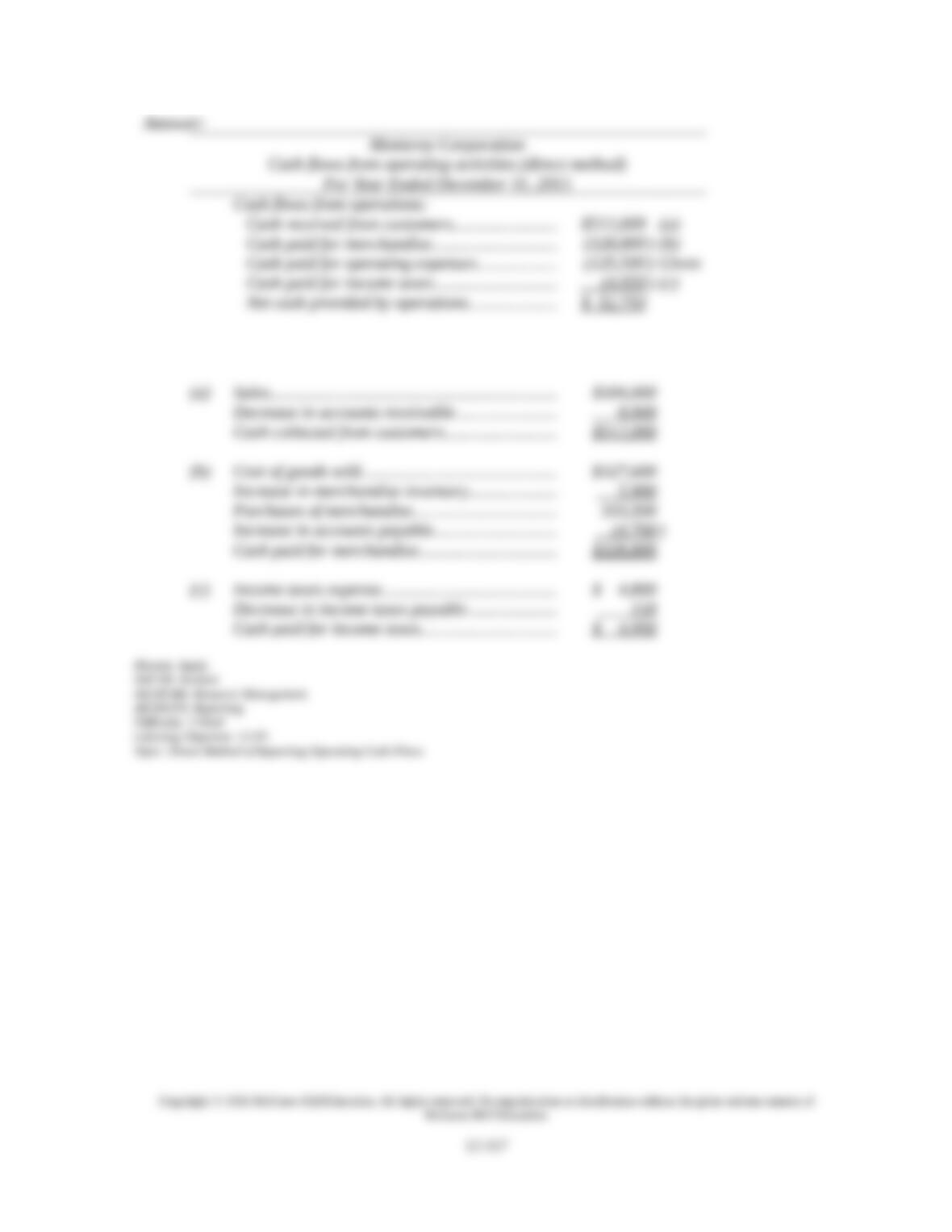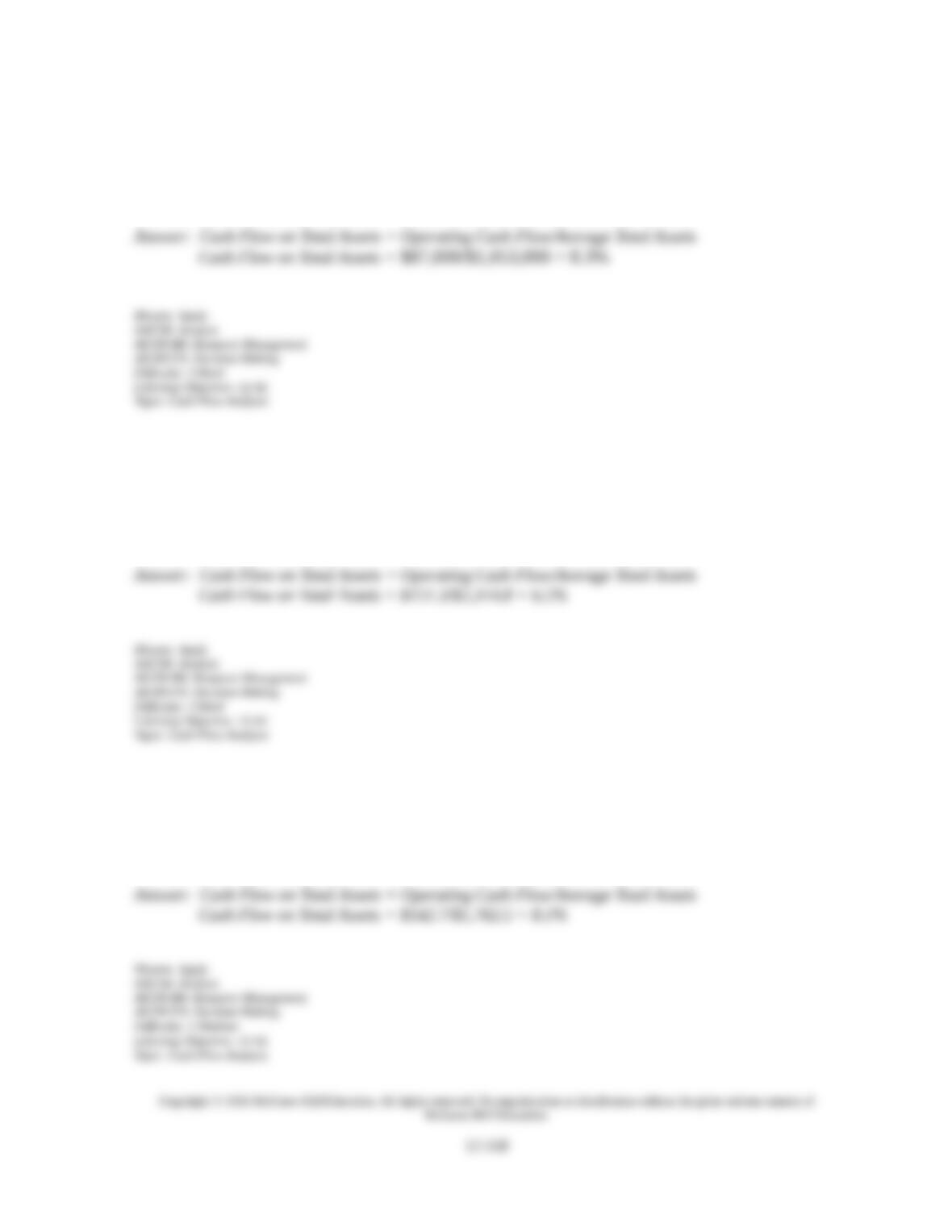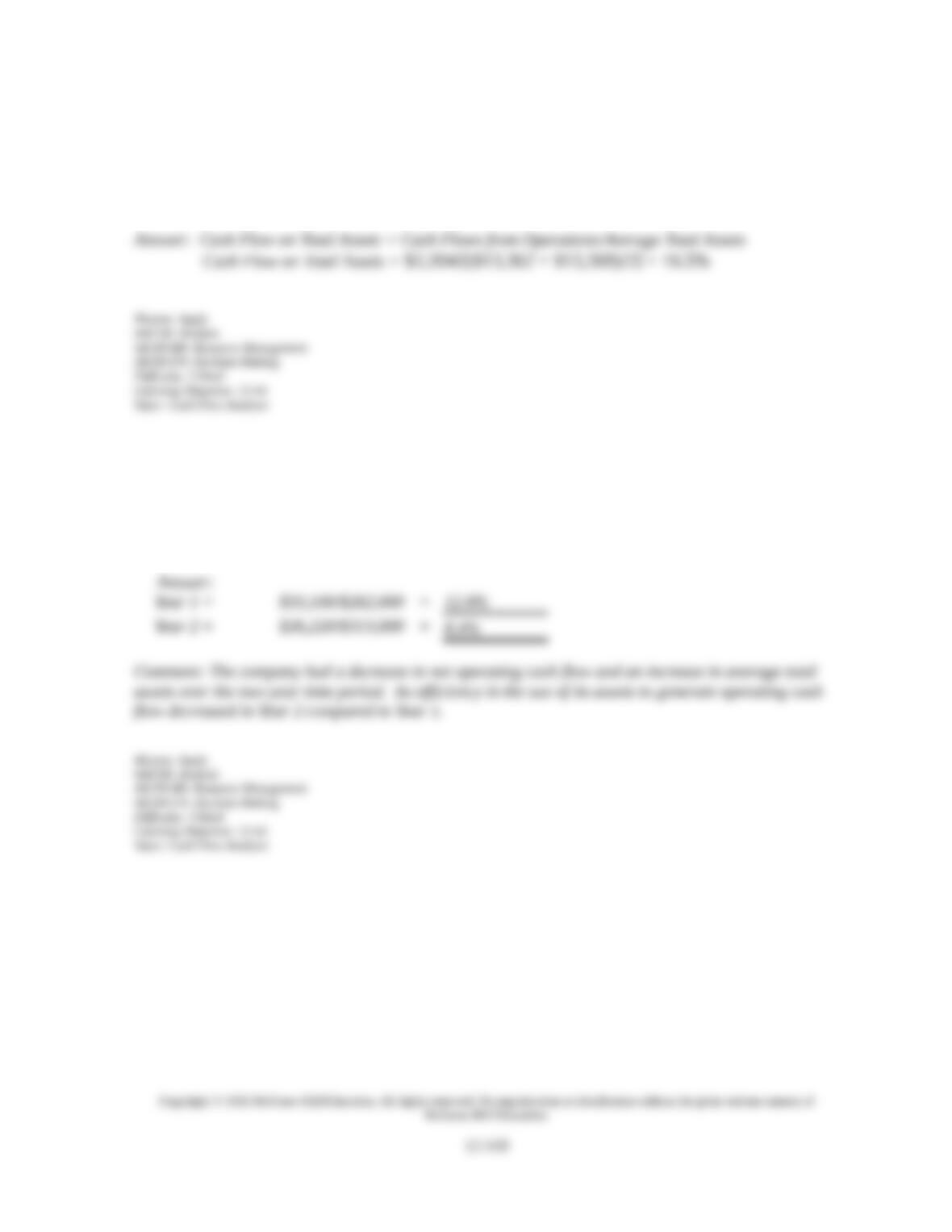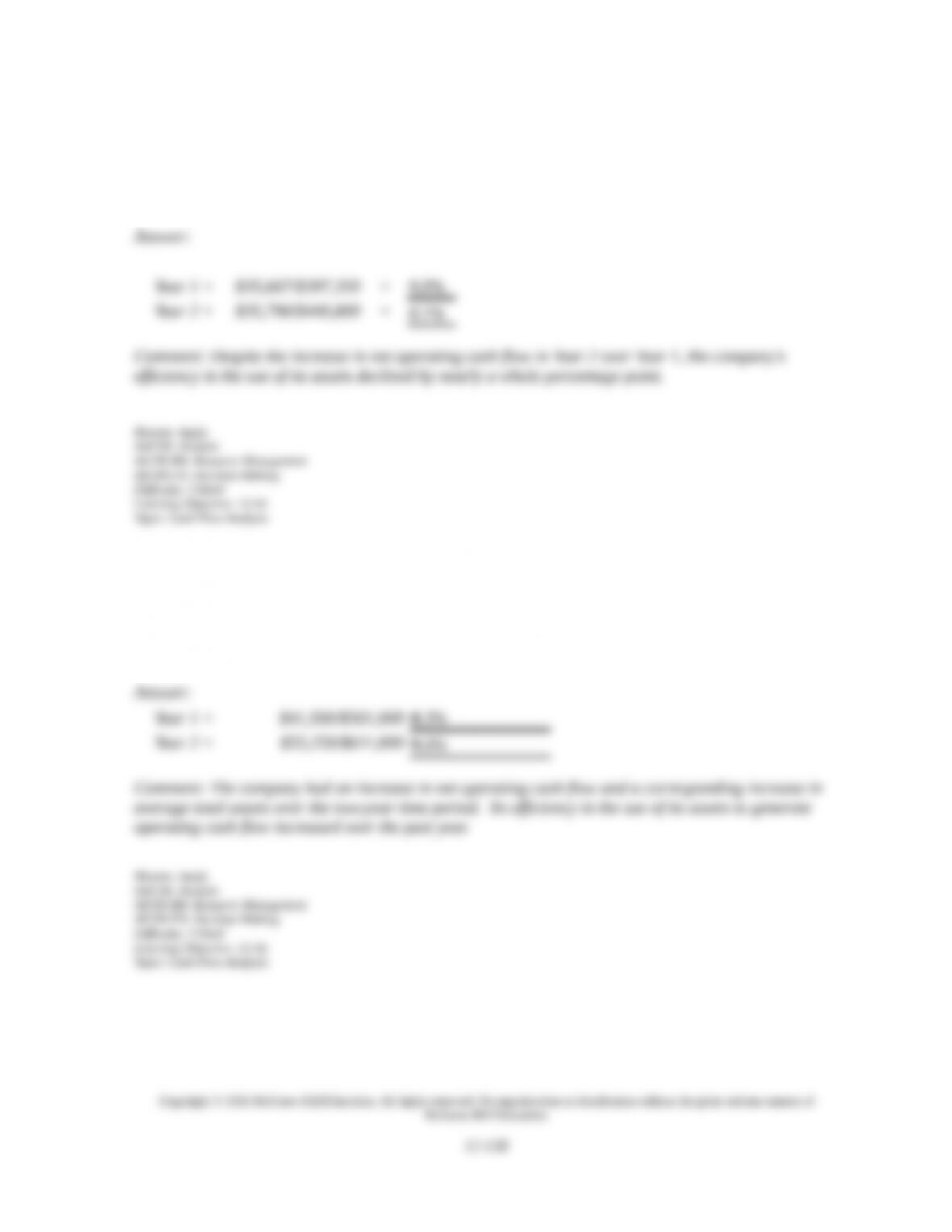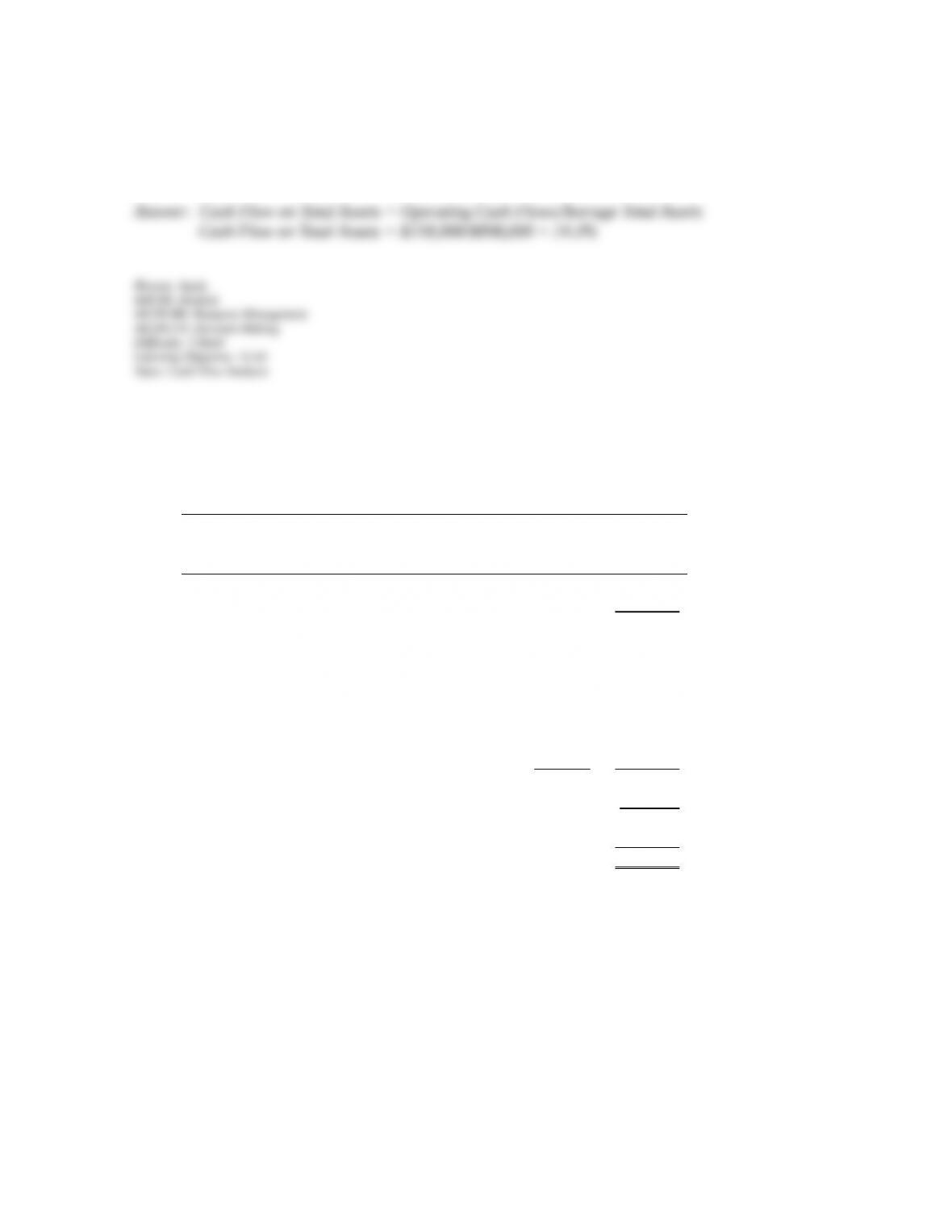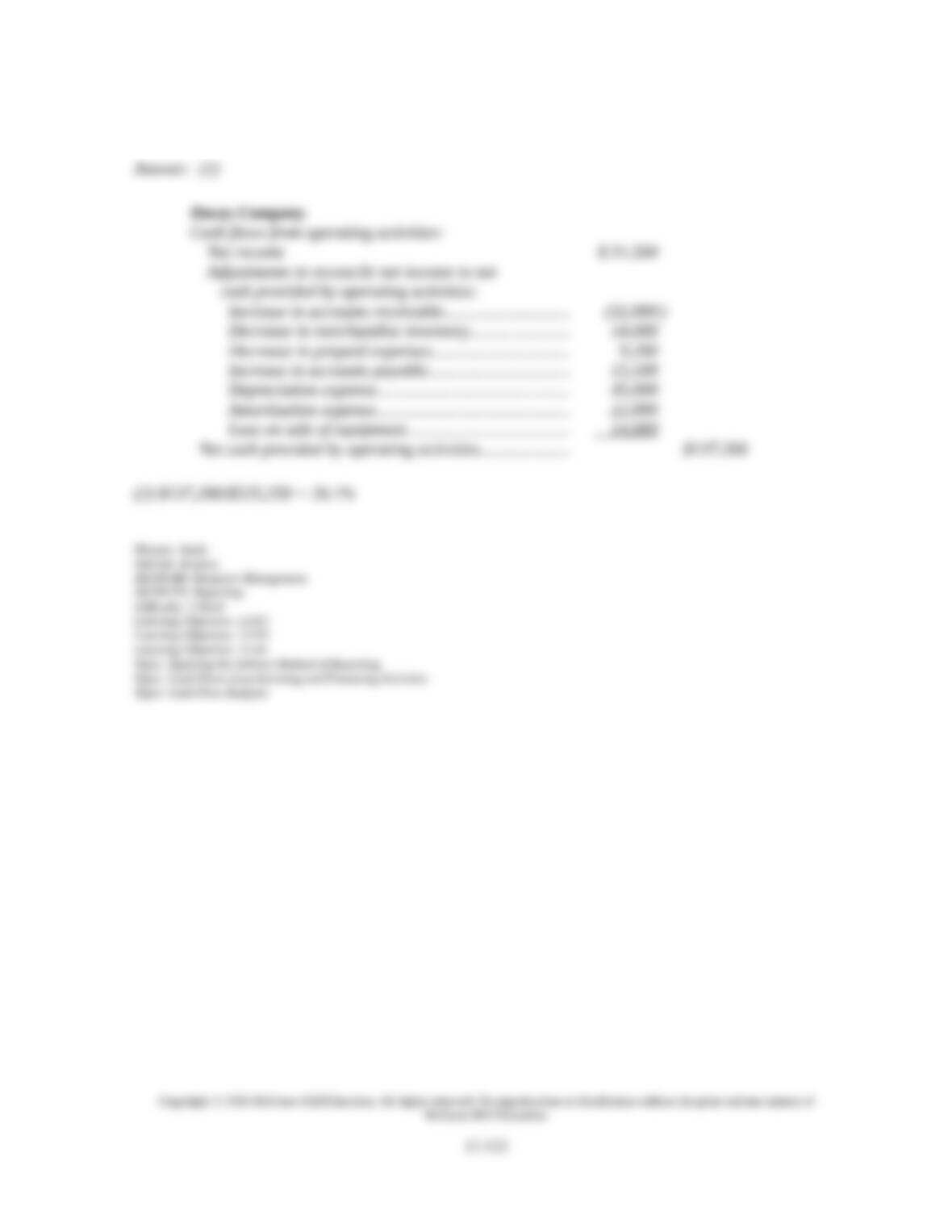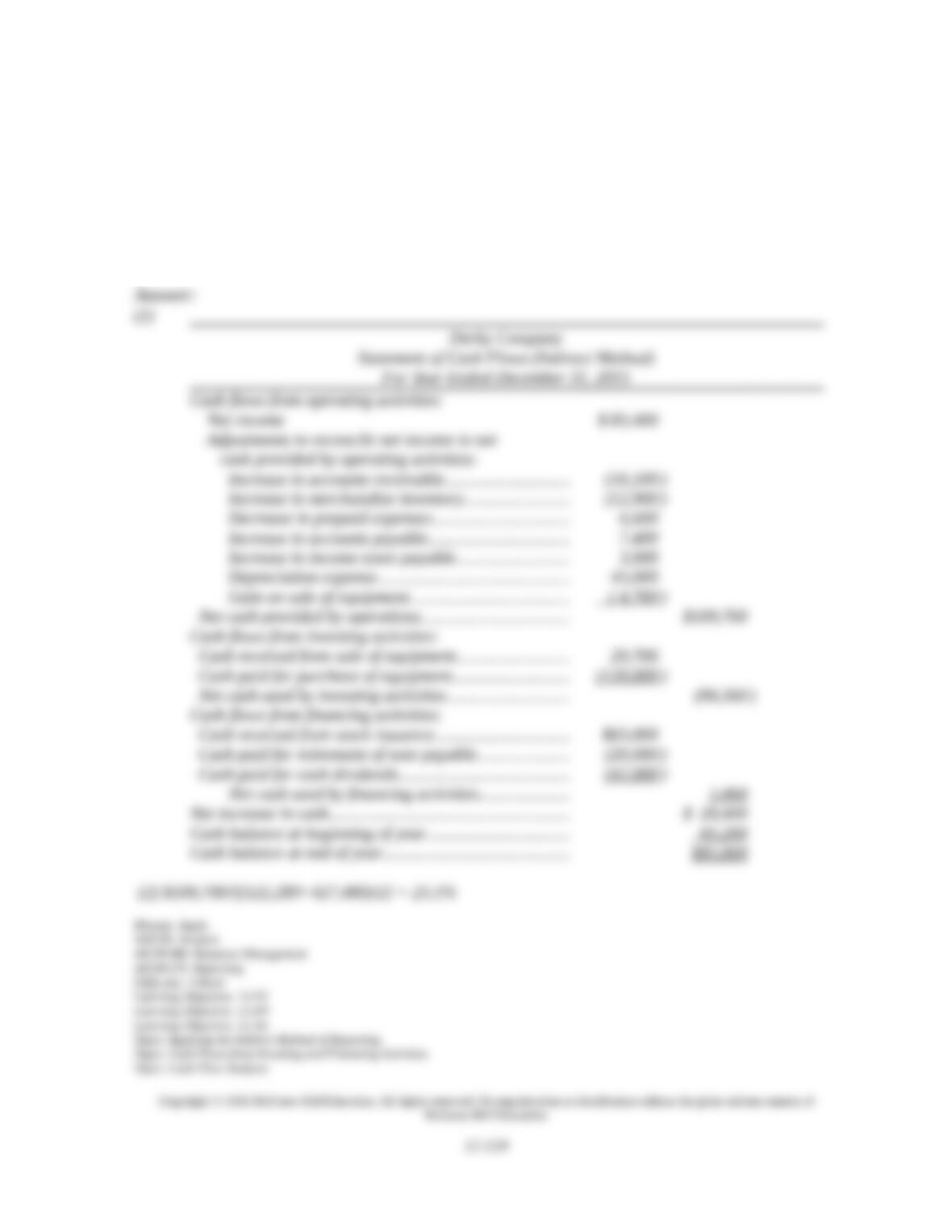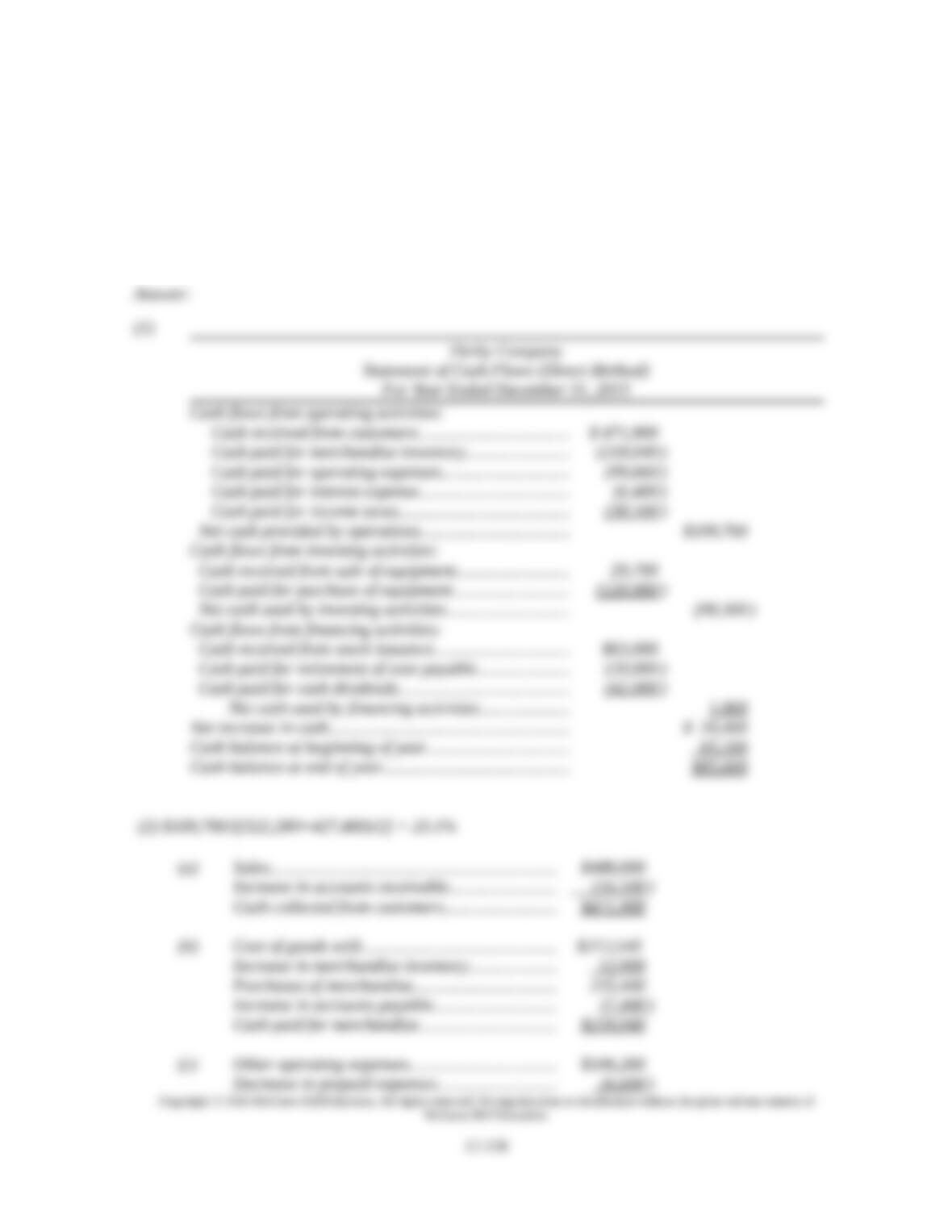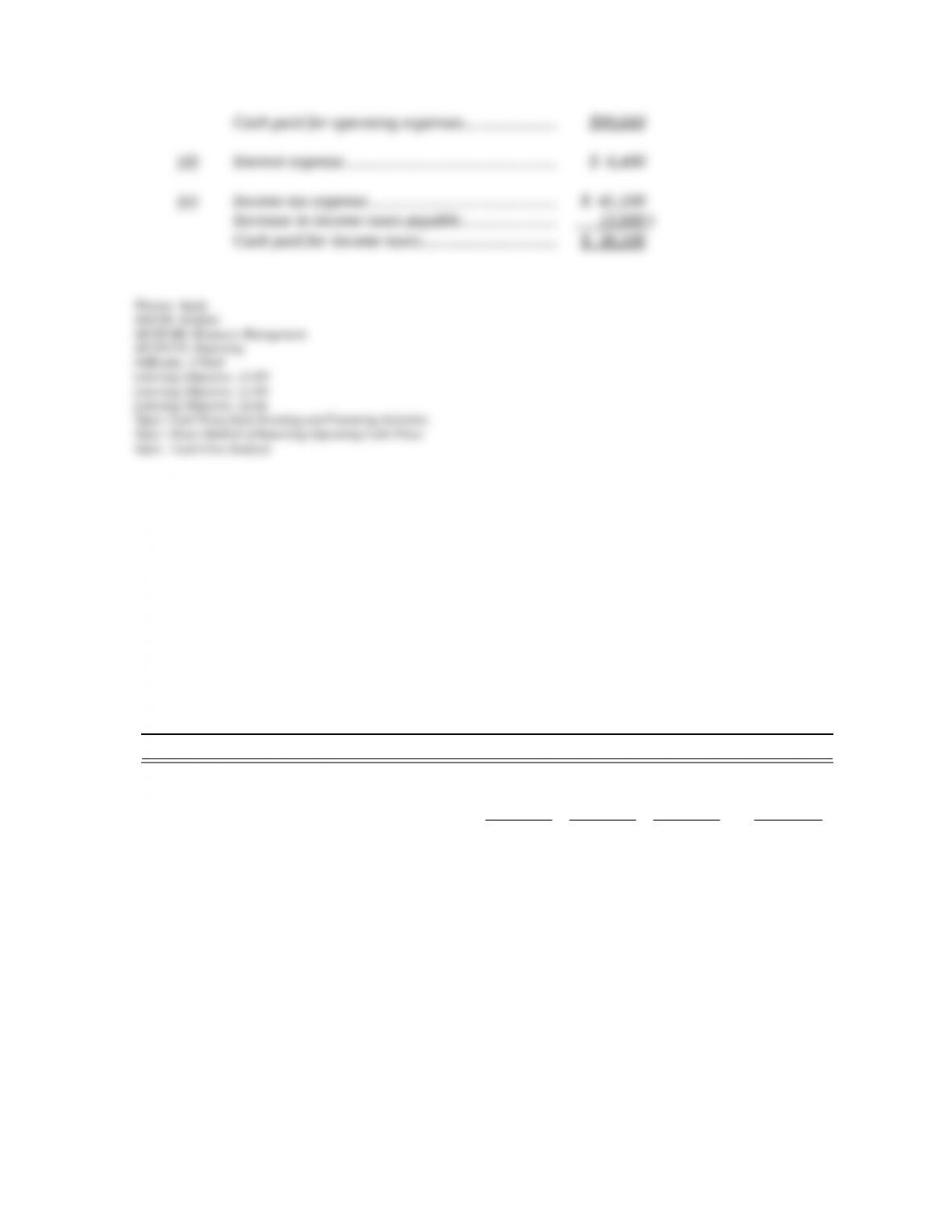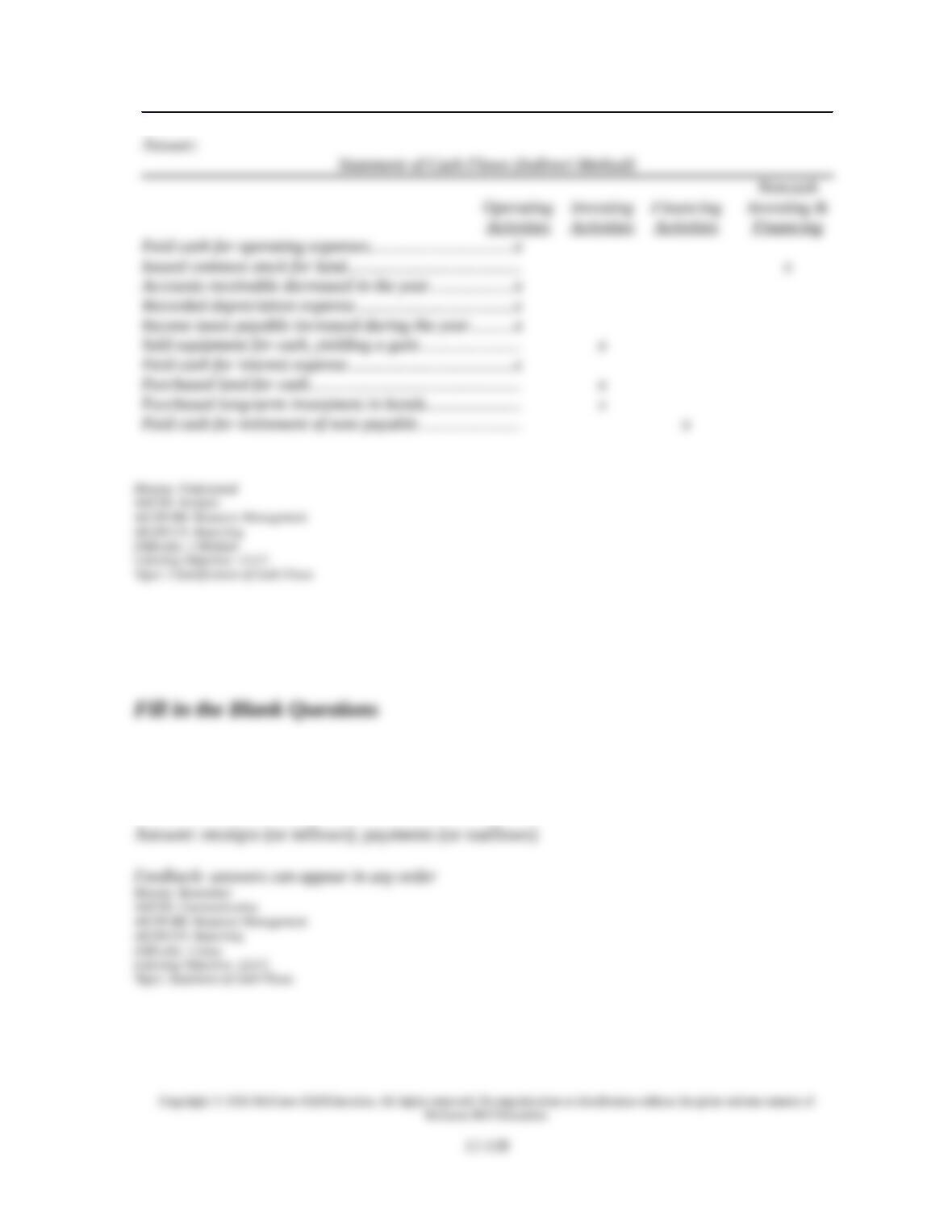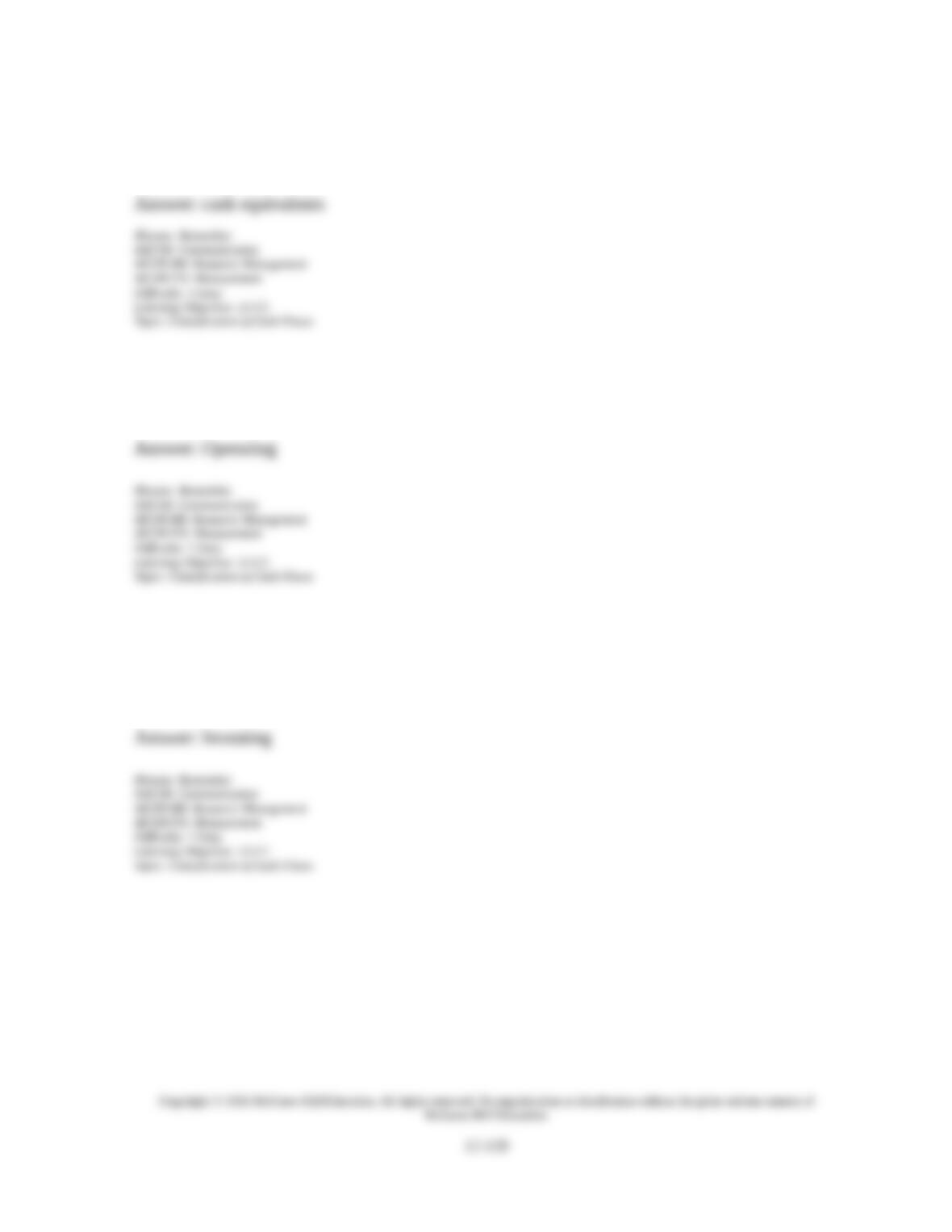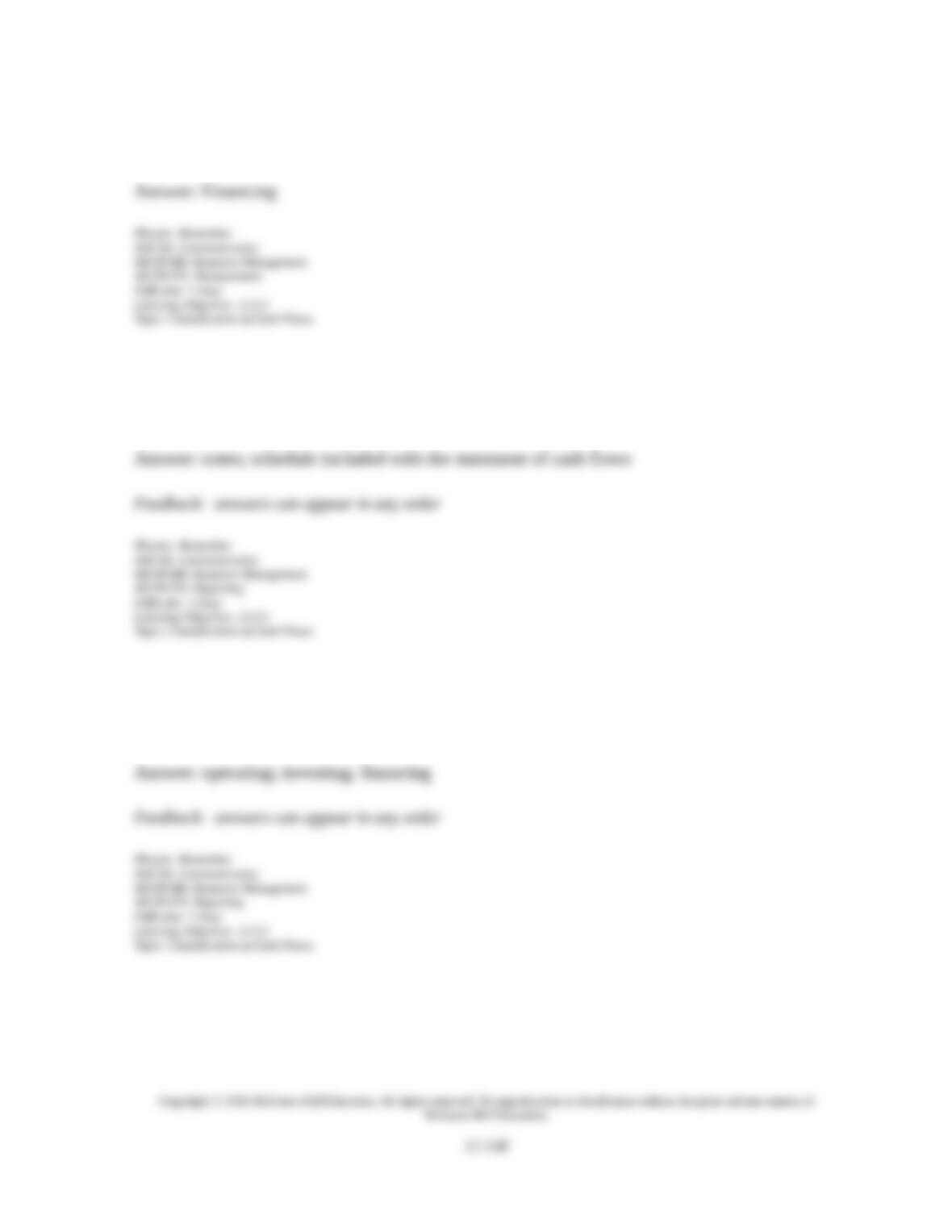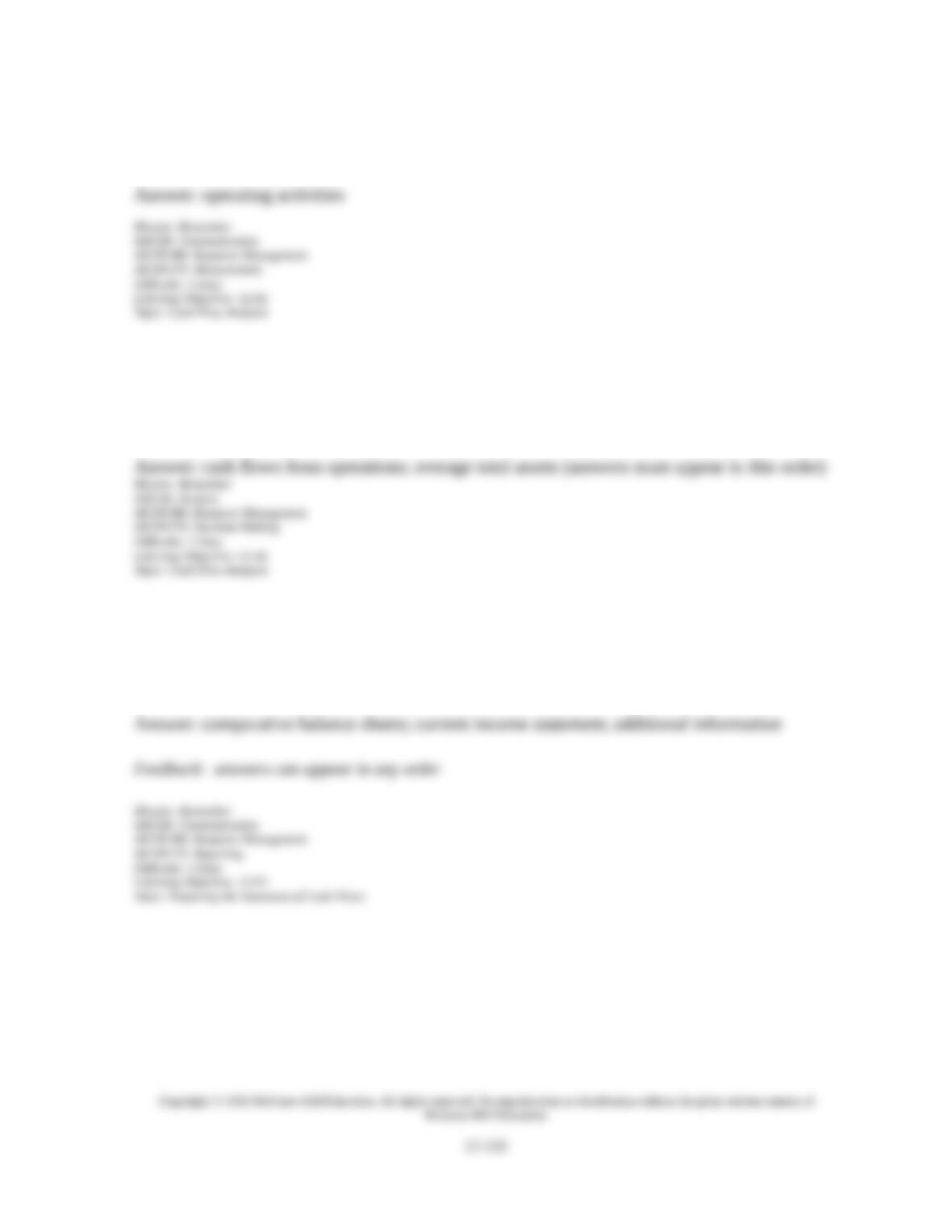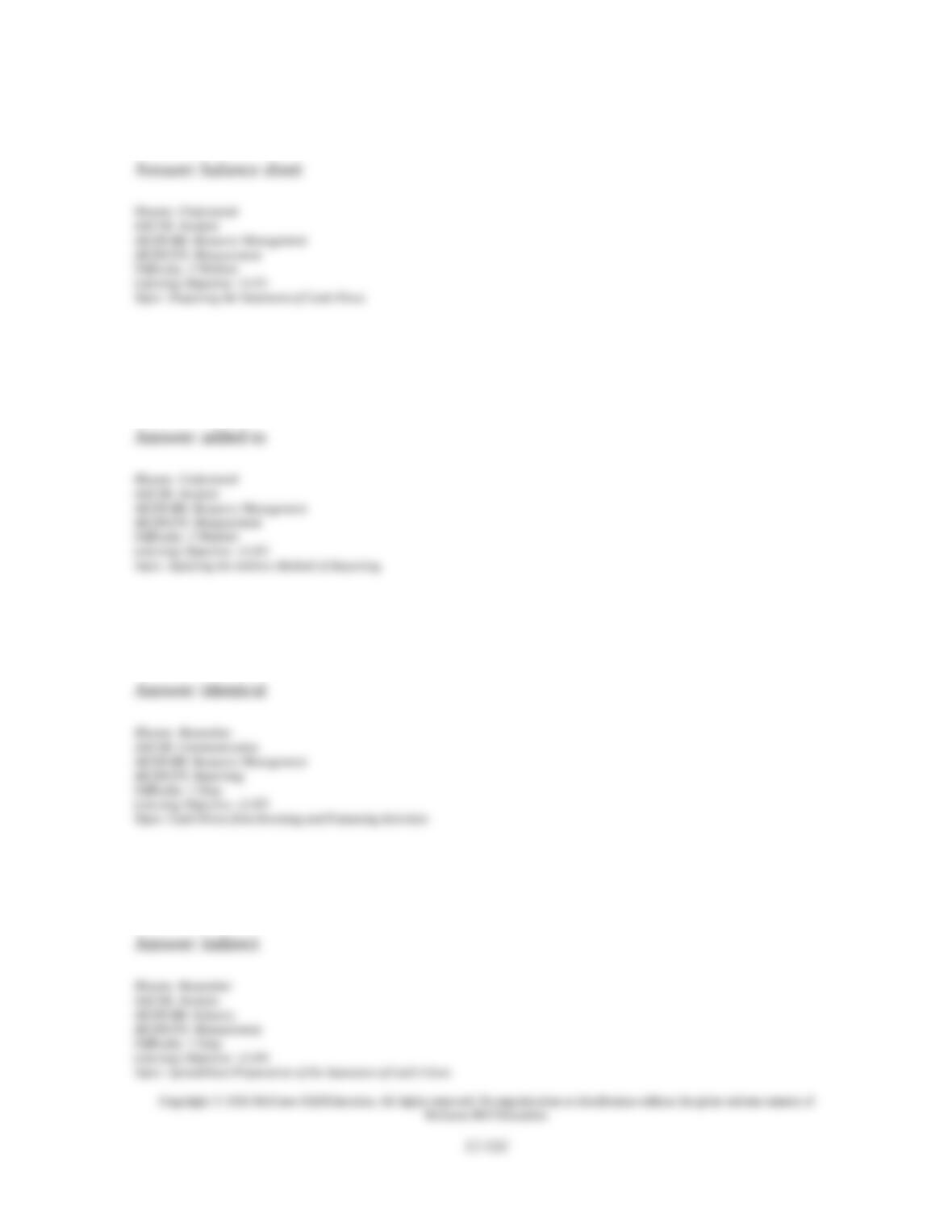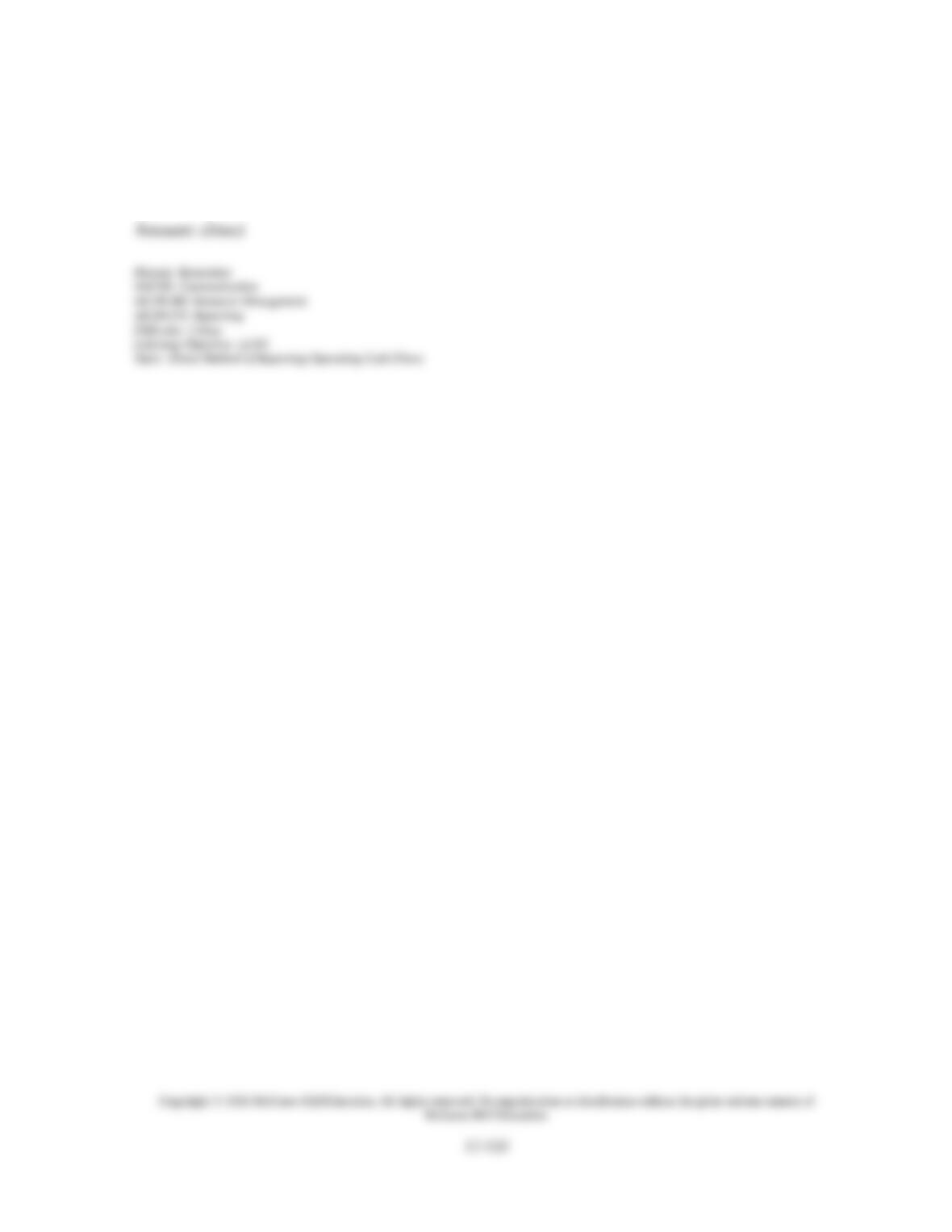200. Use the following financial statements and additional information to (1) prepare a
complete statement of cash flows for the year ended December 31, 2013. The cash provided
or used by operating activities should be reported using the direct method, and (2) compute
the company’s cash flow on total assets ratio for 2015.
Derby Company
Balance Sheets
At December 31
2015 2014
Assets:
Cash................................................................................... $ 85,600 $ 65,200
Accounts receivable, net.................................................... 72,850 56,750
Merchandise inventory...................................................... 157,750 144,850
Prepaid expenses............................................................... 6,080 12,680
Equipment......................................................................... 280,600 245,600
Accumulated depreciation-Equipment............................... (80,600) (97,600)
Total assets........................................................................... $522,280 $427,480
Liabilities:
Accounts payable............................................................... $ 52,850 $ 45,450
Income taxes payable........................................................ 15,240 12,240
Notes payable (long term)................................................. 59,200 79,200
Total liabilities...................................................................... $127,290 $136,890
Equity:
Common stock................................................................... 200,000 150,000
Paid-in capital in excess of par.......................................... 53,000 40,000
Retained earnings.............................................................. 141,990 100,590
Total equity........................................................................... $394,990 $290,590
Total liabilities and equity.................................................... $522,280 $427,480
Derby Company
Income Statement
For Year Ended December 31, 2015
Sales.................................................................. $488,000
Cost of goods sold............................................. $212,540
Depreciation expense........................................ 43,000
Other operating expenses.................................. 106,260
Interest expense................................................. 6,400 (368,200)
Other gains (losses):
Gain on sale of equipment.............................. 4,700
Income before taxes.......................................... 124,500
Income taxes expense........................................ 41,100
Net income........................................................ $ 83,400
Copyright © 2016 McGraw-Hill Education. All rights reserved. No reproduction or distribution without the prior written consent of
McGraw-Hill Education.
12-125

























































































